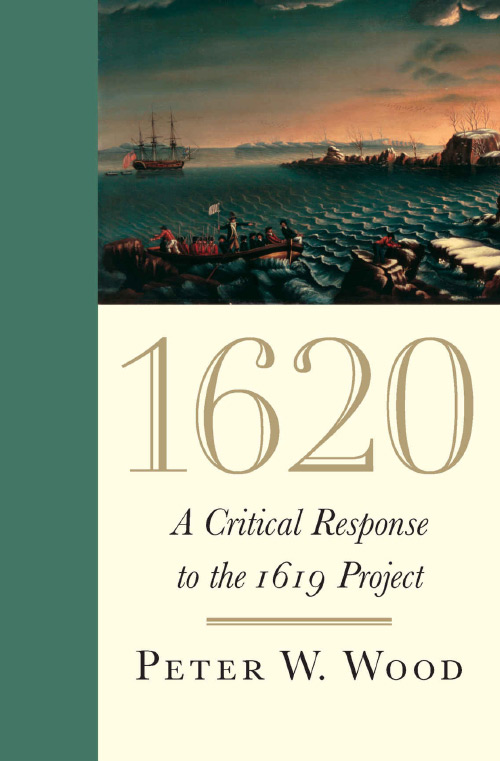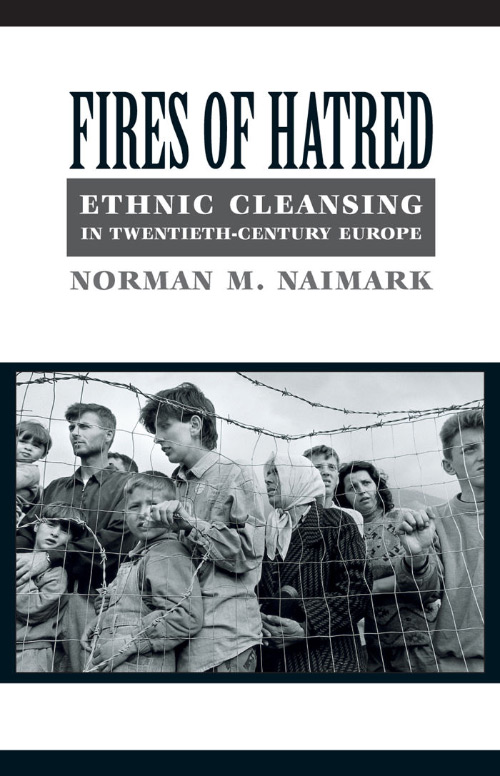Part four of four of the series “The Crisis in Civil Rights: Recommended Readings on Race, Police, and the Welfare State.”
If you can read just one item on this list, then make it Illiberal Reformers: Race, Eugenics, and American Economics in the Progressive Era, by Thomas C. Leonard. If you can read only two, make your second choice Frederick Douglass: Self-Made Man, by Timothy Sandefur.
1620: A Critical Response to the 1619 Project, by Peter W. Wood. Encounter Books, 2020.
Wood writes, “The 1619 Project is, arguably, part of a larger effort to destroy America by people who find it unbearably bad. The project treats the founding principles of our nation as an illusion—a contemptible illusion. In their place is a single idea: that America was founded on racist exploitation.”
William Allen writes, “Peter Wood's 1620 claims the prize as the most comprehensive response to the ill-fated 1619 Project. In a thorough review of the text, Wood accounts for every argument for and against. He appropriately honors the [1619] Project's intention to pursue a mission of redress, while nevertheless pinpointing its consistent resort to misrepresentation that cannot be dismissed as merely different interpretation. Wood identifies the heart of the matter: Surely there are ways to incorporate a forthright treatment of slavery, racism, and the black experience into the story of America's rise as a free, self-governing, creative, and prosperous nation. The key to doing that is to put the pursuit of the ideals of liberty and justice at the center of the story. The 1619 Project failed in that for the sufficient reason that its purpose was cultural shakedown, not cultural affirmation. That is made plain in this necessary work.”
The Abolitionist Legacy: From Reconstruction to the NAACP, by James M. McPherson. Princeton University Press, 1976.
A popular contention among some historians is that abolitionists abandoned the cause of rights for African Americans after emancipation. Representative of this thesis, August Meier’s wrote “. . . white abolitionists . . . were not, for the most part, genuinely committed to a belief in the essential human dignity of Negroes.” McPherson rejects this claim in this work (which extends what he had already written in The Struggle for Equality) and shows the continuing work of the abolitionists and their descendants during the late nineteenth and early twentieth centuries.
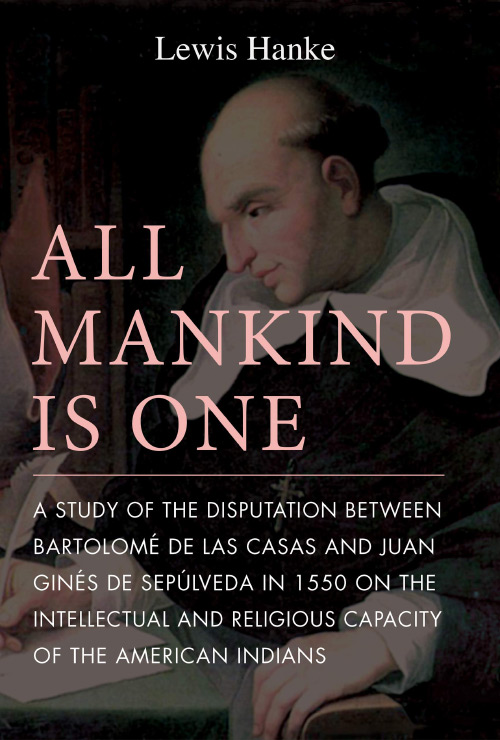 All Mankind Is One: A Study of the Disputation Between Bartolomé de Las Casas and Juan Ginés de Sepúlveda in 1550 on the Intellectual and Religious Capacity of the American Indian, by Lewis Hanke. Northern Illinois University Press, Reprint, 1994.
All Mankind Is One: A Study of the Disputation Between Bartolomé de Las Casas and Juan Ginés de Sepúlveda in 1550 on the Intellectual and Religious Capacity of the American Indian, by Lewis Hanke. Northern Illinois University Press, Reprint, 1994.
Before the king of Spain in 1550, Bartolomé de Las Casas argued in Aristotelian terms and accordance with Christian values that American Indians were not savages, barbarians, or natural slaves, but rather civilized humans who should be treated with respect. Sepúlveda argued that they were not. Las Casas also wrote a famous treatise in defense of the Indians. Here is the story, with a complete background.
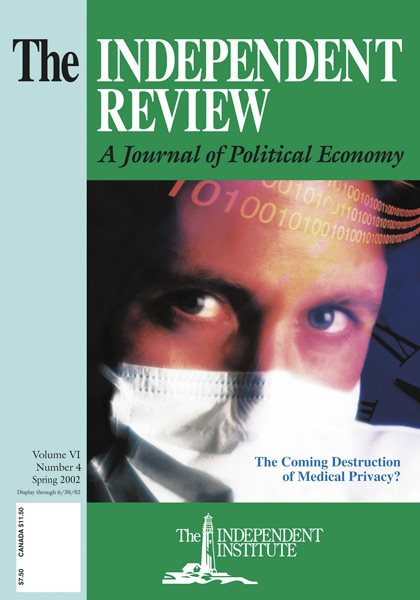 “An Ambivalent Legacy: Black Americans and the Political Economy of the New Deal,” by Paul Moreno. The Independent Review, vol. 6, no. 4 (Spring 2002), pp. 513–539. Download PDF
“An Ambivalent Legacy: Black Americans and the Political Economy of the New Deal,” by Paul Moreno. The Independent Review, vol. 6, no. 4 (Spring 2002), pp. 513–539. Download PDF
Moreno writes, “The [New Deal’s] combination of economic failure and political success can be explained in terms of the public-choice theory of political economy that few historians have employed. . . . The racial problems that the New Deal ignored or exacerbated became the focus of the next acts in the drama of American race relations—the civil rights movement of the 1950s and the black revolution of the 1960s—and they made more likely the subsequent development of affirmative action.”
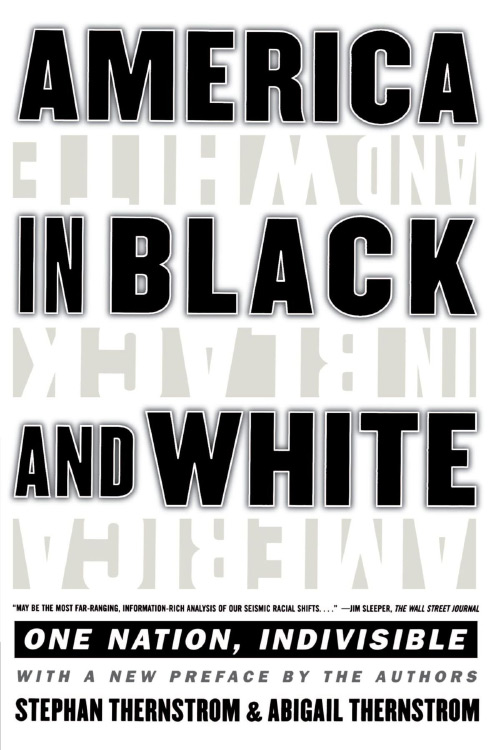 America in Black and White: One Nation, Indivisible, by Stephan Thernstrom and Abigail Thernstrom. Simon and Schuster, 1997.
America in Black and White: One Nation, Indivisible, by Stephan Thernstrom and Abigail Thernstrom. Simon and Schuster, 1997.
Publishers Weekly says, “This weighty book, contextualizing some complex racial history and limning current controversial issues, serves as a good backdrop to future arguments about race. After discussing history (e.g., the Jim Crow laws, Northern segregation), the authors emphasize that national economic expansion in the 1940s and 1950s—before the civil rights era—helped blacks rise economically. They offer a nuanced take on the difficulty of neighborhood integration, and their analyses of black single motherhood and crime challenge conventional liberal explanations. The meat of the book is a careful attack on race-based policies; even blacks now oppose school busing and Afrocentrism.” This economic rise of blacks in the 1940s and 1950s that the Thernstroms report has public-policy significance. As Jason L. Riley writes, “If you are a politician who insists that government programs are necessary to address black poverty, evidence of the rapid rise of the black middle class in the absence of such programs undercuts your argument.”
“Apartheid,” by Thomas W. Hazlett. In The Concise Encyclopedia of Economics. Liberty Fund, October 1988.
Hazlett writes, “The conventional view is that apartheid was devised by affluent whites to suppress poor blacks. In fact, the system sprang from class warfare and was largely the creation of white workers struggling against both the black majority and white capitalists. Apartheid was born in the political victory of radical white trade unions over both their rivals. In short, this cruelly oppressive economic system was socialism with a racist face. . . . Capitalists strongly opposed apartheid, and apartheidists strongly opposed capitalism. . . . Apartheid was sought by those economically threatened by the synergies between black workers and white capitalists. That interest groups can so steer economic regulation as to achieve the social savagery of apartheid is a chilling lesson.”
 “Asian Exclusion in American Immigration Policy,” by Zachary Gochenour. In Public Choice Analyses of American Economic History, vol. 2, ed. by Joshua Hall and Marcus Witcher. Springer, 2018. Pp. 57-68. Download PDF
“Asian Exclusion in American Immigration Policy,” by Zachary Gochenour. In Public Choice Analyses of American Economic History, vol. 2, ed. by Joshua Hall and Marcus Witcher. Springer, 2018. Pp. 57-68. Download PDF
Gochenour writes, “[The slogan of the California Workingman’s Party] was ‘The Chinese must go!’ ... The most vocal critic of the [1882 Chinese Exclusion Act] was the anti-slavery and anti-imperialist Republican Senator George Frisbie Hoar of Massachusetts, who described the act as ‘nothing less than the legalization of racial discrimination.’ The act received considerable support from the nascent labor unions, such as the Knights of Labor....
“Based on the content of publicized discussions in Congress, some responsibility for immigration restriction belongs to America’s nascent labor movement.... As progressive ideology took shape, it came to incorporate new ideas [such as immigration restriction] and became closely associated with organized labor.”
“Bitter Harvest,” by A. V. Krebs. Washington Post, February 2, 1992.
President Franklin D. Roosevelt’s internment of Japanese-Americans was, to a large extent, a response to lobbying by white farmers who were envious of Japanese-American success in agriculture, wanted to end competition from them, and wanted to grab their land.
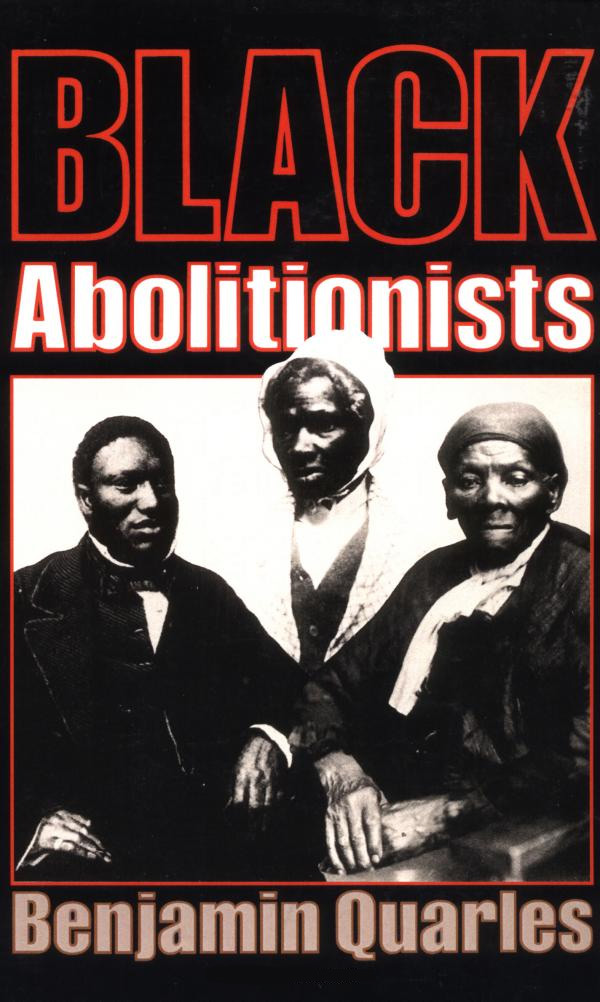 Black Abolitionists, by Benjamin Quarles. Hachette Books, 1991.
Black Abolitionists, by Benjamin Quarles. Hachette Books, 1991.
This seminal work is the story of the black abolitionists who were pioneers in the antislavery movement. Quarles’s book documents in great detail the high degree of cooperation between black and white abolitionists.
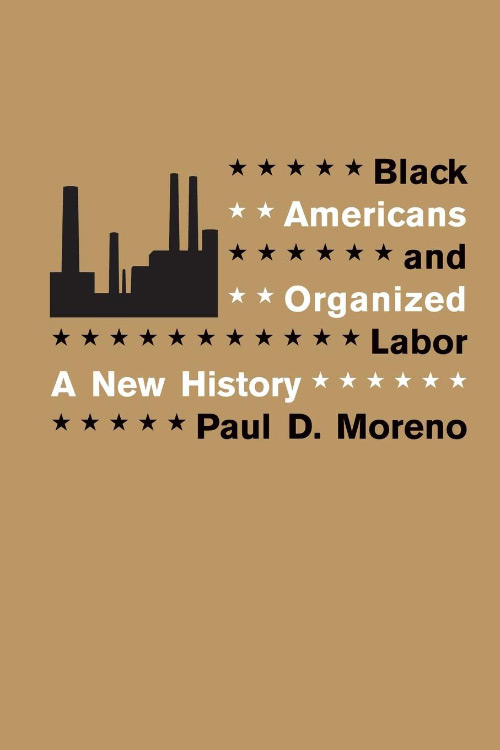 Black Americans and Organized Labor: A New History, by Paul D. Moreno. Louisiana State University Press, 2005.
Black Americans and Organized Labor: A New History, by Paul D. Moreno. Louisiana State University Press, 2005.
Craig Phelan writes, “Paul Moreno has made a significant contribution to the literature on labor and race in the US. Rather than a progressive force seeking to transcend racial divisions imposed by employers, trade unions are depicted as job trusts bent on controlling labor markets and thereby restricting job opportunities for blacks.”
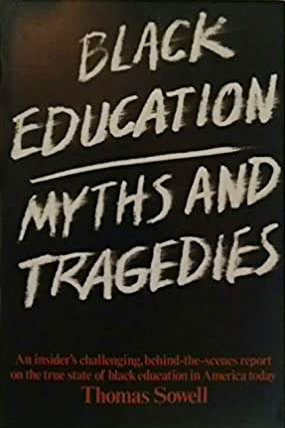 Black Education: Myths and Tragedies, by Thomas Sowell. David McKay Company, 1972.
Black Education: Myths and Tragedies, by Thomas Sowell. David McKay Company, 1972.
The Kirkus review says, “Sowell maintains that putting ill-prepared blacks, especially from the ghetto, into a high-pressure situation at top universities creates destructive frustrations and catalyzes self-consolatory militant separatism; but to compensate with black studies programs full of soft courses and lower standards is to cheat the student. This view is elaborated at circumstantial length, especially with reference to the 1969 Cornell upheavals. Sowell is severe toward those black administrators and teachers who in his view cover their mediocrity by playing campus politics and by spouting the rhetoric of blackness. He further argues that many able, industrious black students are being discriminated against by recruiters searching for the more ‘underprivileged’ albeit less gifted and he decries the tendency to dismiss working-class black families as ‘middle-class.’”
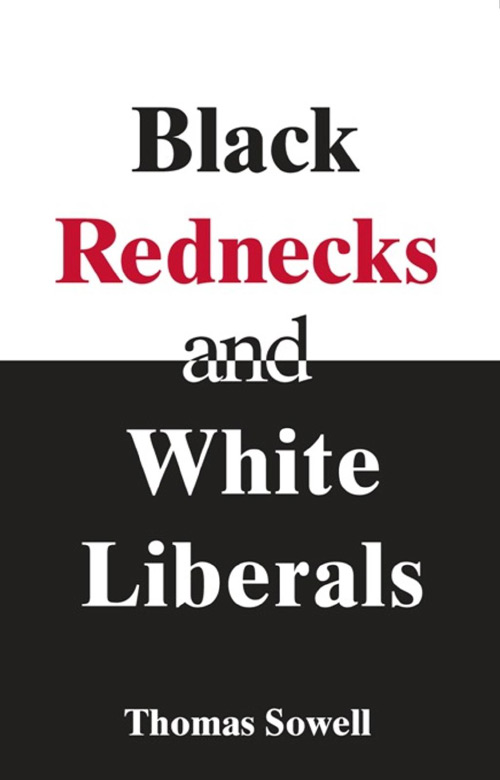 Black Rednecks and White Liberals, by Thomas Sowell. Encounter Books, 2006.
Black Rednecks and White Liberals, by Thomas Sowell. Encounter Books, 2006.
A compilation of well-crafted essays dispelling many common misconceptions about race. Noteworthy is the discussion on the effects of slavery outside of the Anglosphere and intercomparisons of different ethnicities and cultures. Also included is the important case study of Dunbar High School in Washington DC, which was once an elite all-black school. Horace Mann Bond noted in 1970 that among blacks with a PhD, more came from Dunbar than any other high school in the country. After the 1954 Brown v. Board of Education decision, the school was reorganized as a neighborhood school and saw a decline in academic performance. Sowell’s work is expertly researched, and his language remains accessible.
“Black Victimhood Versus Black Individual Responsibility,” by Anne Wortham. Libertarian Alliance, Political Notes, no. 92 (1994). Download PDF
Wortham writes, “Unlike actual victimization, the stance of victimhood is a technique of self-presentation and impression management that involves the symbolic elaboration of actual victim status. Since symbolic elaboration is a quality of conceptualization and not of concrete reality, one need not be an actual victim to make a claim to victim status. Whether he has actually experienced injustice or not, the symbolic victim presents himself as the embodiment of all the real or imagined suffering of his membership group as a whole. He asks us to ignore the fact that he is not an actual victim and, instead, treat him as if he were a victim.”
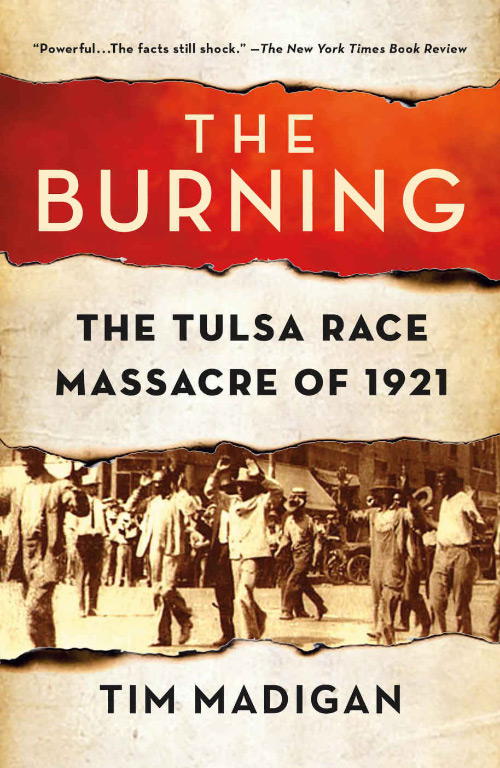 The Burning: The Tulsa Race Massacre of 1921, by Tim Madigan. St. Martin’s Griffin, 2001.
The Burning: The Tulsa Race Massacre of 1921, by Tim Madigan. St. Martin’s Griffin, 2001.
Publisher’s promotional material: “On the morning of June 1, 1921, a white mob numbering in the thousands marched across the railroad tracks dividing black from white in Tulsa, Oklahoma, and obliterated a black community then celebrated as one of America's most prosperous. 34 square blocks of Tulsa's Greenwood community, known then as the Negro Wall Street of America, were reduced to smoldering rubble.” At least a hundred and possibly several hundred blacks were murdered. Larry Cox writes, "The story of Greenwood is written in such chilling detail and clarity that one can almost smell the smoke and hear the cries. This is historical reporting at its best."
Madigan’s account of the massacre is careful and full of detail. He notes that a few of the beleaguered blacks attempted to use guns in self-defense. He also tells how afterwards the white establishment attempted to use new building codes to prevent blacks from rebuilding. The courts blocked this exclusionary effort, but the building-code shenanigans caused delays in rebuilding that were economically quite burdensome for blacks.
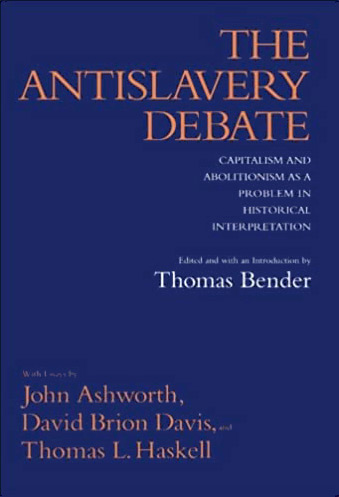 “Capitalism and the Origins of the Humanitarian Sensibility, Part 2,” by Thomas L. Haskell. American Historical Review, vol. 90, no. 3 (June 1985). Reprinted in The Antislavery Debate: Capitalism and Abolitionism as a Problem in Historical Interpretation, ed. by Thomas Bender. University of California Press, 1992.
“Capitalism and the Origins of the Humanitarian Sensibility, Part 2,” by Thomas L. Haskell. American Historical Review, vol. 90, no. 3 (June 1985). Reprinted in The Antislavery Debate: Capitalism and Abolitionism as a Problem in Historical Interpretation, ed. by Thomas Bender. University of California Press, 1992.
Haskell writes, “[T]he thesis to be maintained here is that the crucial links between capitalism and humanitarianism stem not from the rise of the bourgeoisie per se but from its most characteristic institution, the market, and they are bonds created not by class interest but ... from a cognitive style common to economic affairs, judgments of moral responsibility, and much else. ... [C]ontrary to romantic folklore, the marketplace is not a Hobbesian war of all against all. Many holds are barred. Success ordinarily requires not only pugnacity and shrewdness but also restraint. ...
“The defining characteristic of the ‘man of principle,’ the moral paragon of a promise-keeping, market-centered form of life, was his willingness to act on principle no matter how inconvenient it might be. ... The abolitionists were notoriously men and women of principle. ... [I]n the particular circumstances of late eighteenth-century Anglo-American culture the market ... pushed causal perception across the threshold that had hitherto made slaves’ misery ... seem a necessary evil.”
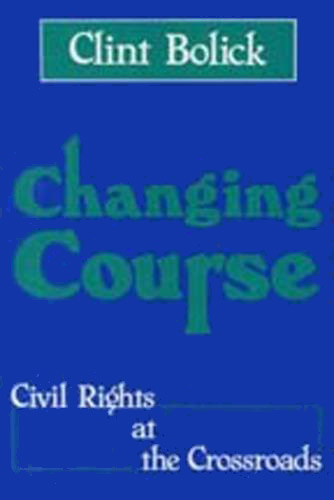 Changing Course: Civil Rights at the Crossroads, by Clint Bolick. Transaction Publishers, 1988.
Changing Course: Civil Rights at the Crossroads, by Clint Bolick. Transaction Publishers, 1988.
Bolick places the causes of civil rights firmly in the natural rights tradition. Clarence Thomas writes, “[Changing Course] should be on the ‘must read’ list of all who still believe in individual freedom, and intend to take steps to preserve and defend it.”
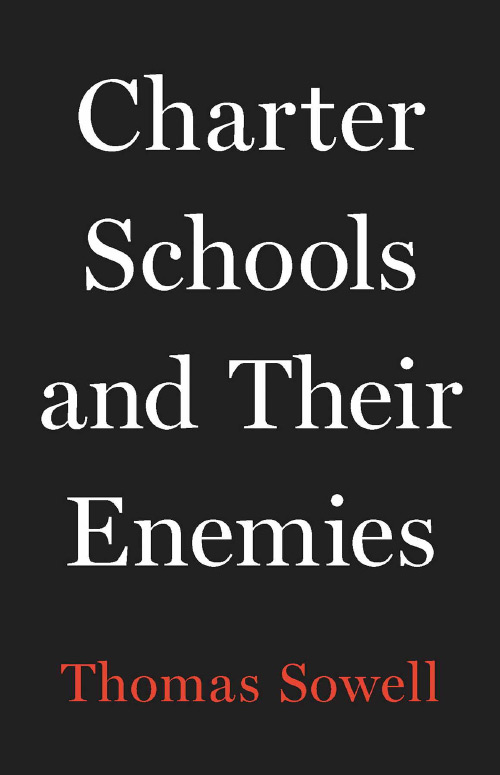 Charter Schools and Their Enemies, by Thomas Sowell. Basic Books, 2020.
Charter Schools and Their Enemies, by Thomas Sowell. Basic Books, 2020.
Sowell writes, “The educational success of these charter schools undermines theories of genetic determinism, claims of cultural bias in the tests, assertions that racial ‘integration’ is necessary for blacks to reach educational parity, and presumptions that income differences are among the ‘root causes’ of educational differences. This last claim has been used for decades to absolve traditional public schools of any responsibility for educational failures in low-income minority communities.”
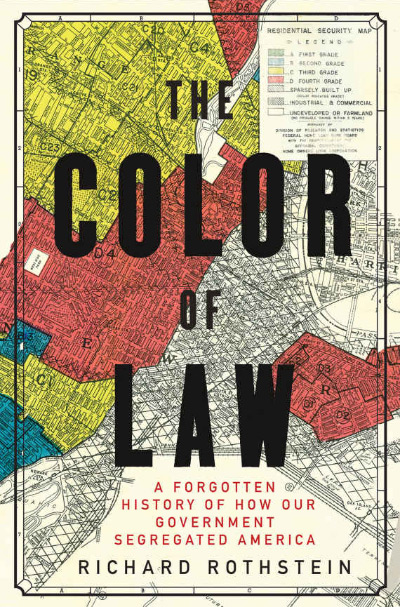 The Color of Law: A Forgotten History of How Our Government Segregated America, by Richard Rothstein. Liveright, 2017.
The Color of Law: A Forgotten History of How Our Government Segregated America, by Richard Rothstein. Liveright, 2017.
Publisher’s publicity material: “As Jane Jacobs established in her classic The Death and Life of Great American Cities, it was the deeply flawed urban planning of the 1950s that created many of the impoverished neighborhoods we know. Now, Rothstein expands our understanding of this history, showing how government policies led to the creation of officially segregated public housing and the demolition of previously integrated neighborhoods. While urban areas rapidly deteriorated, the great American suburbanization of the post–World War II years was spurred on by federal subsidies for builders on the condition that no homes be sold to African Americans.” Carl Paulus writes in The American Conservative, “Rothstein’s work should make everyone, all across the political spectrum, reconsider what it is we allow those in power to do in the name of ‘social harmony’ and ‘progress’ with more skepticism.... The Color of Law shows what happens when Americans lose their natural rights of life, liberty, and the pursuit of happiness.” Geoffrey R. Stone adds, “The central premise of [Rothstein’s] argument...is that residential racial segregation in our nation [to a large extent] is not the result of private decisions by private individuals, but is the direct product of unconstitutional government action.”
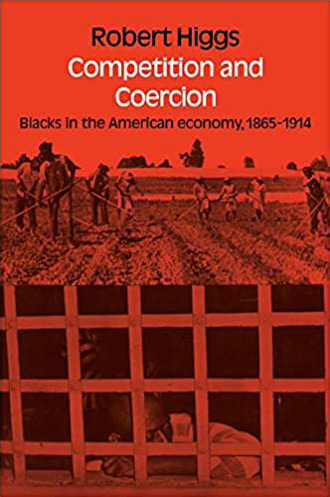 Competition and Coercion: Blacks in the American Economy, 1865-1914, by Robert Higgs. Cambridge University Press, 1977. Download PDF
Competition and Coercion: Blacks in the American Economy, 1865-1914, by Robert Higgs. Cambridge University Press, 1977. Download PDF
Morgan O. Reynolds calls this “an excellent book.” Higgs says, “[D]uring the period 1865-1914, the legislation of the Southern states probably mattered less than the refusal of the whites who controlled the legal machinery to provide equal protection to the blacks. This allowed a reign of ‘private’ lawlessness, intimidation, and violence that had pervasive effects on the economic behavior of the blacks.”
“Competition, Monopoly, and the Pursuit of Money,” by Armen A. Alchian and Reuben A. Kessel. In Aspects of Labor Economics, National Bureau of Economic Research, 1962. Download PDF
Where is there are monopoly privileges and, in nonprofits, where decision-makers do not directly pursue pecuniary gains, there will be increased room for discrimination in terms of race, sex, or language minority. David R. Henderson writes, “[The authors] argue that when a regulated monopoly bumps up against the profit limit that regulators have set, discrimination becomes a free good. If the firm’s profits were not regulated, they argue, following the reasoning of Gary Becker, then discrimination against employees on grounds other than productivity would cost the firm some forgone profits. But if a firm has hit its profit constraint, there is no further gain from forswearing discrimination to pursue profits.”
 Confiscation and Destruction: The Young Turk Seizure of Armenian Property, by Ugur Ümit Üngör and Mehmet Polatel. Continuum International Publishing Group, 2011.
Confiscation and Destruction: The Young Turk Seizure of Armenian Property, by Ugur Ümit Üngör and Mehmet Polatel. Continuum International Publishing Group, 2011.
Ugur Üngör writes, “[T]he book . . . details the emergence of Turkish economic nationalism, offers insight into the economic ramifications of the genocidal process, and describes how the plunder was organized on the ground. The book discusses the interrelated nature of property confiscation initiated by the Young Turk regime and its cooperating local elites, and offers new insights into the functions and beneficiaries of state-sanctioned robbery. . . . Chapter two [traces] the evolution of the Turkish-nationalist ideology of building a purely Turkish ‘national economy’ within the multi-ethnic Ottoman economic landscape.”
“Conservation—Native American Style,” by Terry L. Anderson. Property and Environment Research Center Policy Series, no. PS-6, July 1996. Download PDF
Anderson writes, “Because American Indians adapted their institutions to the resource constraints, they were able to sustain life, often in hostile environments. Property rights were an integral part of American Indians’ heritage. . . . Non-Indians also will do well to stop promulgating myths as a solution to modern environmental problems. Especially in a multi-cultural society where world-views vary widely, devolution of authority and responsibility offers the best hope for resource conservation. Rather than shunning property rights solutions, we should embrace them, as did our predecessors on this continent.”
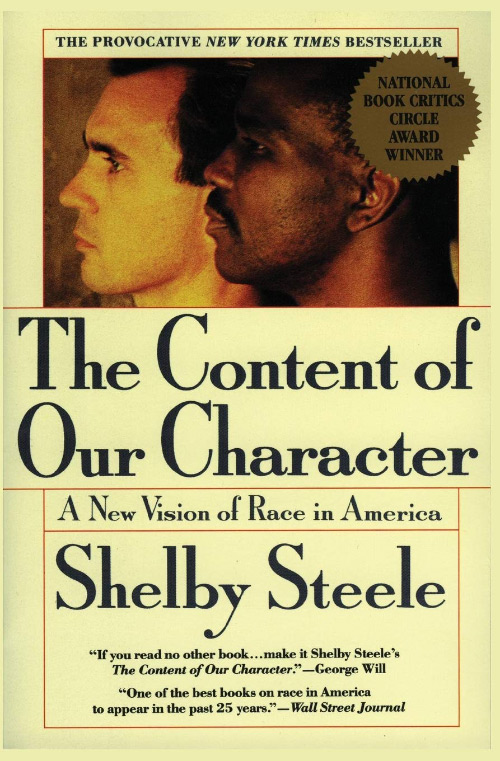 The Content of Our Character: A New Vision of Race in America, by Shelby Steele. Harper Perennial, 1991.
The Content of Our Character: A New Vision of Race in America, by Shelby Steele. Harper Perennial, 1991.
In addition to observing the sad tendency to place group identity before that of the individual, Steele also points out the counterproductive nature of policies said to be aimed at improving the condition of racial minorities. The Publishers Weekly review reads, “Steele, seeking to improve strained race relations, demonstrates how social policies intensify rather than lessen racial differences, how blacks and whites tend to see color before character, and how blacks are often oppressed more by doubt in their abilities than by racism. This won a National Book Critics Circle Award.”
“The Creek Nation and the Culture of Consent”, by Amy H. Sturgis. (Review of Of One Mind and of One Government: The Rise and Fall of the Creek Nation in the Early Republic, by Kevin Kokomoor.) Reason, November 2019.
Before the 1790s, the Creek tribes were “a decentralized, adaptable” collection of communities that relied on local and kin-based decision-making. Afterward they were forced by the U.S. government and the Georgia state government to form a unitary state of their own.
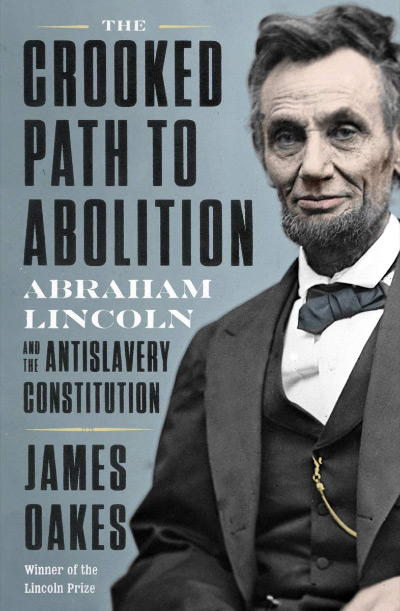 The Crooked Path to Abolition: Abraham Lincoln and the Antislavery Constitution, by James Oakes. Norton, 2021.
The Crooked Path to Abolition: Abraham Lincoln and the Antislavery Constitution, by James Oakes. Norton, 2021.
The author, a prominent historian of slavery and the American Civil War, has come to believe that “the antislavery reading [of the Constitution] now strikes me as more compelling—and the proslavery reading less persuasive than I once believed.” Oakes describes the antislavery interpretation of the Constitution set forth in the 1840s by William Goodell, Alvan Stewart, and Lysander Spooner—and how Abraham Lincoln adopted that interpretation and applied it.
“Culling the Herd”: Eugenics and the Conservation Movement in the United States, 1900-1940,” by Garland E. Allen. Journal of the History of Biology, vol. 46, no. 1 (Spring 2013), pp. 31–72.
From the abstract: “While from a late twentieth- and early twenty-first century perspective, the ideologies of eugenics (controlled reproduction to eliminate the genetically unfit and promote the reproduction of the genetically fit) and environmental conservation and preservation, may seem incompatible, they were promoted simultaneously by a number of figures in the progressive era in the decades between 1900 and 1950. Common to the two movements were the desire to preserve the ‘best’ in both the germ plasm of the human population and natural environments (including not only natural resources, but also undisturbed nature preserves such as state and national parks and forests). In both cases advocates sought to use the latest advances in science to bolster and promote their plans, which in good progressive style, involved governmental planning and social control. This article explores the interaction of eugenic and conservationist ideologies in the careers of Sacramento banker and developer Charles M. Goethe and his friend and mentor, wealthy New York lawyer Madison Grant. In particular, the article suggests how metaphors of nature supported active work in both arenas.”
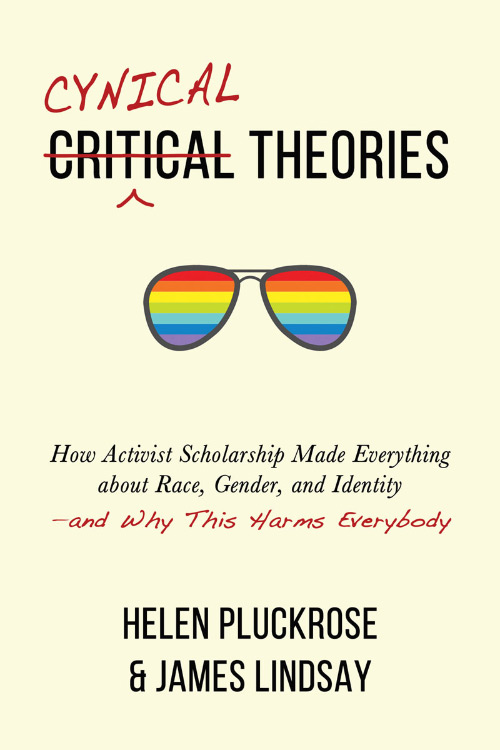 Cynical Theories: How Activist Scholarship Made Everything about Race, Gender, and Identity―and Why This Harms Everybody, by Helen Pluckrose and James Lindsay. Pitchstone Publishing, 2020.
Cynical Theories: How Activist Scholarship Made Everything about Race, Gender, and Identity―and Why This Harms Everybody, by Helen Pluckrose and James Lindsay. Pitchstone Publishing, 2020.
Chapter 5: “Critical Race Theory and Intersectionality” is the most important for our purposes. Pluckrose and Lindsay write, “[C]ritical race Theory sounds rather racist itself. ... We are told racism is embedded in culture and that we cannot escape it. We hear that white people are inherently racist. We are told that ... only white people can be racist. We are informed that only people of color can talk about racism, that white people just have to listen. ... We hear that ... being color-blind is, in fact, racist....
“In the real world, attempting to ‘respect’ all marginalized identities at once, as unique voices with the inherent, unquestionable wisdom connected to their cultural groups, can produce conflict and contradiction. We saw [an example] of this when the lifelong human rights campaigner Peter Tatchell was accused of racism for criticizing black rap musicians who sang about murdering gay people....
[B]y focusing so intently on race and by objecting to ‘color-blindness,’ ... critical race Theory threatens to undo the social taboo against evaluating people by their race. Such an obsession with race, combined with a critique of liberal universalism and individuality ... is not likely to end well ... for minority groups....
“The Davis-Bacon Act: Vestige of Jim Crow,” by David E. Bernstein. National Black Law Journal, vol. 13, no. 3 (1994).
The Davis-Bacon Act is beloved by the construction unions. Bernstein writes, “One of the goals of Davis-Bacon supporters was to prevent Blacks from working on federal construction projects. . . . Congress passed Davis-Bacon with discriminatory intent.”
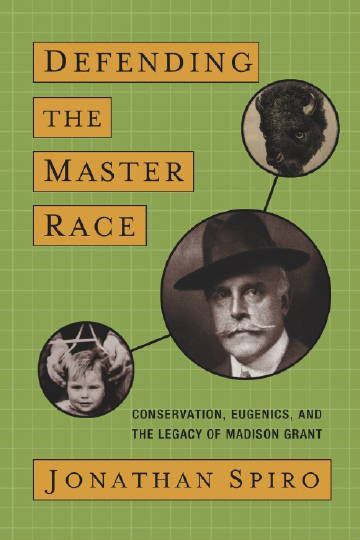 Defending the Master Race: Conservation, Eugenics, and the Legacy of Madison Grant, by Jonathan Spiro. University of Vermont Press, 2008.
Defending the Master Race: Conservation, Eugenics, and the Legacy of Madison Grant, by Jonathan Spiro. University of Vermont Press, 2008.
Publisher’s promotional material: “Scholars have labeled Madison Grant everything from the ‘nation’s most influential racist’ to the ‘greatest conservationist that ever lived.’ . . . This insightful biography shows how Grant worked side-by-side with figures such as Theodore Roosevelt to found the Bronx Zoo, preserve the California redwoods, and save the American bison from extinction. But Grant was also the leader of the eugenics movement in the United States. He popularized the infamous notions that the blond-haired, blue-eyed Nordics were the ‘master race’ and that the state should eliminate members of inferior races who were of no value to the community. Grant’s behind-the-scenes machinations convinced Congress to enact the immigration restriction legislation of the 1920s, and his influence led many states to ban interracial marriage and sterilize thousands of ‘unworthy’ citizens. . . . Jonathan Spiro . . . reveals how the founder of the Bronx Zoo wound up writing the book that Adolf Hitler declared was his ‘bible.’”
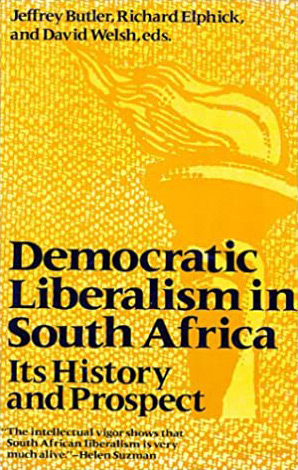 Democratic Liberalism in South Africa: Its History and Prospect, edited by Jeffrey Butler, Richard Elphick, and David Welsh. Wesleyan University Press, 1987.
Democratic Liberalism in South Africa: Its History and Prospect, edited by Jeffrey Butler, Richard Elphick, and David Welsh. Wesleyan University Press, 1987.
Paul H. Thomas writes “[Classical] liberalism’s formal tolerance and respect for the rights and freedoms of all members of a society has been a voice crying out in the wilderness with respect to the unfolding South African political scene. This book is a collection of essays by South Africans who examine all aspects of liberalism in, and its effects on, their native land. Not only are the chapters interesting and informative, but many are written by the leading proponents of liberal change in South Africa.”
The book quotes Alan Paton, president of the classical-liberal South African Liberal Party and author of Cry the Beloved Country, at the Liberal Party’s final meeting in 1968 (the Apartheid government had outlawed multiracial political parties): “Why has a law been passed to make it impossible for us to continue? . . . I’ll tell you why. The Party was small and not powerful. But it was formed to give expression to ideas that were not small, and were full of power. One of these ideas is that man is not born to go down on his belly before the State. Another is that a man should live where he wishes to live, and work where he wishes work. Another is that he should be free to move about his country, and free to take any employment for which he is fitted. Another is that if men and women of different races wish to associate together and to pursue a common purpose, it is their rights as human beings to do so.”
“Discrimination,” by Linda Gorman. In The Concise Encyclopedia of Economics. Liberty Fund.
Gorman writes, “Because official discrimination costs politicians little if the discrimination is politically acceptable, government officials unconstrained by considerations of profit can afford to turn a blind eye to the damage unfair discrimination causes. They often sanction damaging official discrimination to please politically powerful interest groups. At the turn of the [twentieth] century, for example, American blacks began to compete for previously all-white jobs. Racial animosity increased. Whites had the voting power. Thomas Sowell reports that federal civil service hiring rules were amended to require a photograph of the applicant and to allow the hiring official to choose between the three top performers on civil service tests. The number of blacks in federal employment plummeted and remained low until the civil rights movement led to affirmative action sixty years later. But even at the height of segregation, businesses in the South, by contrast, often resisted laws requiring discrimination.”
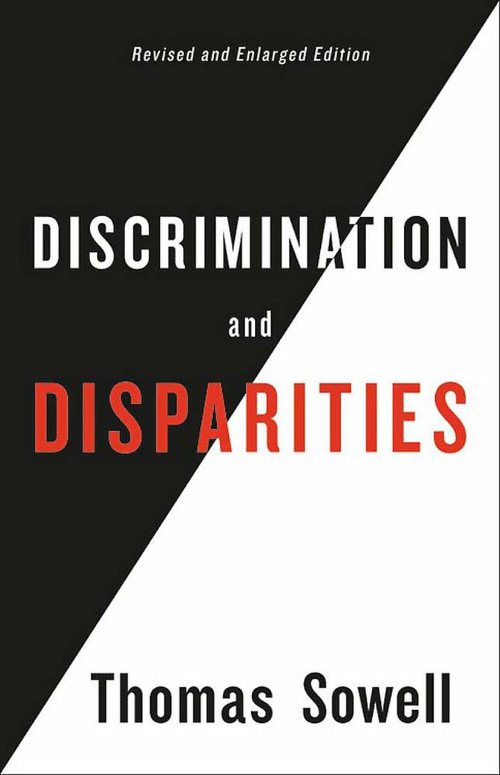 Discrimination and Disparities, by Thomas Sowell. Basic Books, Second Edition, 2019.
Discrimination and Disparities, by Thomas Sowell. Basic Books, Second Edition, 2019.
Sowell writes, “[This book addresse[s] the seemingly invincible fallacy that statistical disparities in socioeconomic outcomes imply either biased treatment of the less fortunate or genetic deficiencies in the less fortunate.” The second edition adds a critique of “social justice” arguments for redistribution of wealth and shows that the concept of “systemic racism” is operationally meaningless.
“Does Locke’s Entanglement with Slavery Undermine his Philosophy?” by Holly Brewer. Aeon Essays, September 12, 2018.
Brewer writes, “Locke and Shaftesbury grew horrified over what they found to be Charles II’s oppressive governance of England and its colonies, and also his promotion of slavery. They began to argue that absolutism possessed a common essence, and took different forms—of kings over subjects, and masters over slaves—but that all forms were wrong. Without his involvement in imperial policymaking, Locke would never have composed the Second Treatise, his theory of democratic governance. He wrote it not to propound Stuart ideals and practices, but against them, compelled by his legal and administrative encounters with slavery, a corrupt colonial government, and a tyrannical monarch. His Two Treatises was a different kind of constitution than the one he had helped to draft for Carolina.”
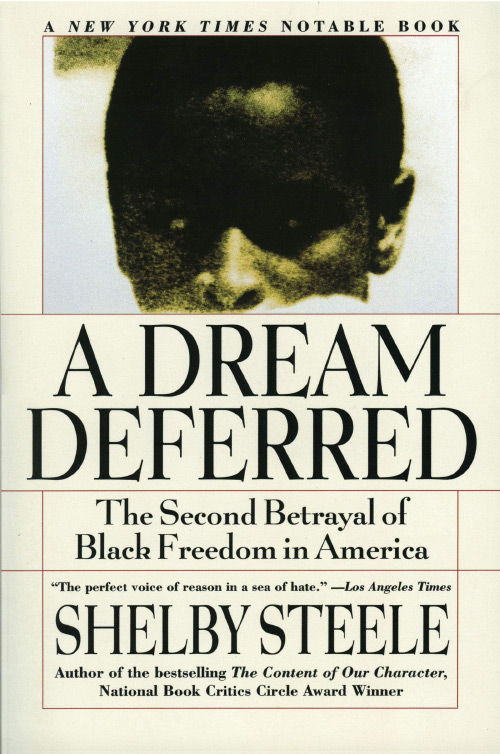 A Dream Deferred: Second Betrayal of Black Freedom in America, by Shelby Steele. Harper Perennial, 1998.
A Dream Deferred: Second Betrayal of Black Freedom in America, by Shelby Steele. Harper Perennial, 1998.
How the civil rights “reforms” of the 1960s failed to address racial injustice, while at the same time the reforms served the secondary purpose of appeasing white shame. The review in the New York Times reads, “Steele has given eloquent voice to painful truths that are almost always left unspoken in the nation’s circumscribed public discourse on race.”
“E. A. Ross: The Progressive as Nativist,” by Julius Weinberg. The Wisconsin Magazine of History, vol. 50, no. 3 (1967), pp. 242–53.
Edward A. Ross was a pioneering and influential American sociologist and a “scientific” racist. He devised the sociological concept of “social control.” Weinberg points out that Ross was successively a populist, progressive, and a New Dealer. He supported utility regulation, labor unions, unemployment insurance, child labor laws, and regulation of female labor. He was a proponent of alcohol prohibition and a eugenicist. He was as well a thoroughgoing racist. His racist views permeated his extensive scholarship. He was politically active in the white supremacist labor movement and said that ships carrying Japanese immigrants to American shores should be blown out of the water. His firing from Stanford for his racist agitation led to the founding of the American Association of University Professors by supporters of Ross and of the idea that a college administration should not be able to fire a professor when that professor teaches the subject matter in a manner that the professor, not the administration, wishes.
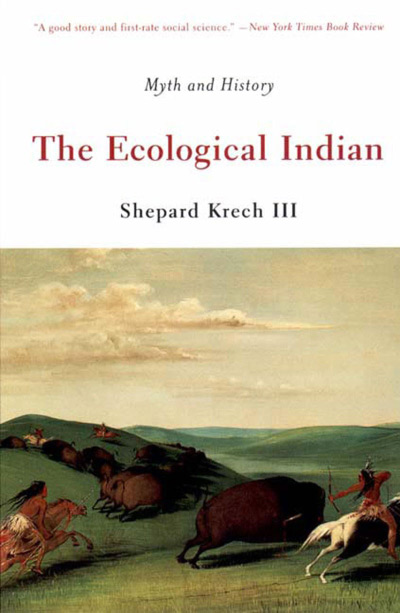 The Ecological Indian: Myth and History, by Shepard Krech III. W.W. Norton & Company, 1999.
The Ecological Indian: Myth and History, by Shepard Krech III. W.W. Norton & Company, 1999.
Krech’s scholarly evidence counters the Romantic-era ideal of the Noble Savage, which has been adopted by environmentalists. Krech provides evidence on such matters as Indian overhunting of beaver and white-tailed deer.
Adrian Tanner writes, “The extensive literature on [the deliberate setting by Indians of forest and brush fires] shows that Indians in all parts of the continent used fire.... While in some instances this was done to improve hunting, [Krech] shows that fires were also set during wars against trespassing groups, both whites and other Indians, and for communication with other Indians.... Krech refers to several settlers' anecdotes about Indian-set fires that got out of control....
“[Indians’] practice of slaughtering whole herds, at a buffalo jump or in an enclosure, sometimes produced more carcasses than a group could possibly use. [Krech] documents instances of Indians leaving animals to rot, utilising only the cows, or taking only the tongues and the humps.”
“The Economic Eugenicism of John Maynard Keynes,” by Phillip W. Magness and Sean Hernandez. Journal of Markets and Morality, vol. 20, no. 1 (2017).
From the abstract: “In this paper, we reexamine the role that eugenicist beliefs played in the formation of Keynesian macroeconomic theory, particularly as it concerned the problem of unemployment. Turning to a historical analysis of Keynes’ writings and accompanying archival material, we present evidence of a continuity of eugenicist themes that links his early work on population control to his embrace of state-organized economic design at the mature phase of his career. Taken in sum, eugenics adds a complicated moral dimension to the genesis of Keynesian thought, though one that we also note is highly consistent with the technocratic inclinations of progressive era policymaking.”
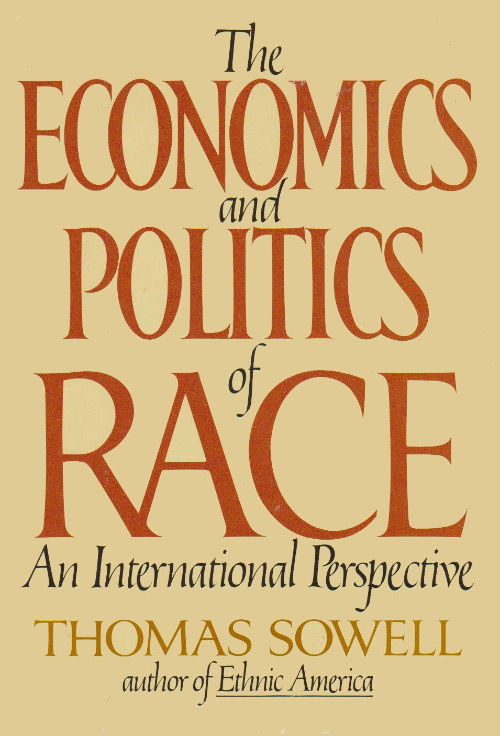 The Economics and Politics of Race, by Thomas Sowell. William Morrow, 1983.
The Economics and Politics of Race, by Thomas Sowell. William Morrow, 1983.
Sowell looks at the relationship between wealth, socioeconomic advancement, and race, with a particular attention paid to the impact of slavery in the United States and elsewhere.
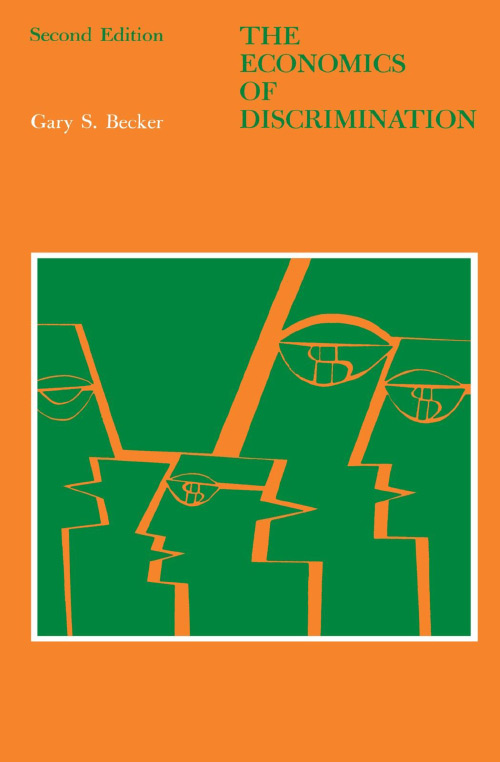 Economics of Discrimination, by Gary Becker. University of Chicago Press, 1957.
Economics of Discrimination, by Gary Becker. University of Chicago Press, 1957.
David R. Henderson writes, “One of the earliest [economic] contributions to the understanding of racial discrimination was Gary Becker’s book The Economics of Discrimination, written in 1957 and based on his PhD dissertation at the University of Chicago. One of Becker’s main contributions in that book was the idea that when an employer discriminates on a basis other than productivity, he misses out. Becker’s point was not that therefore employers would not discriminate but rather that the free market makes them pay a cost for discriminating.”
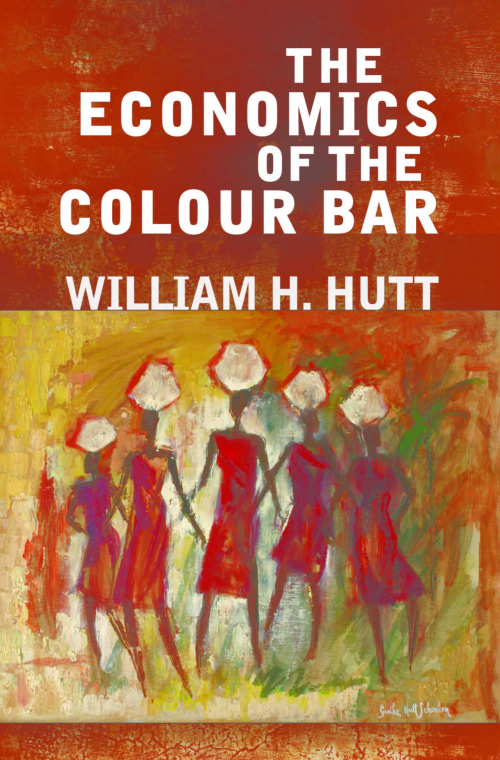 The Economics of the Colour Bar, by William H. Hutt. Merritt & Hatcher, 1964. Download PDF
The Economics of the Colour Bar, by William H. Hutt. Merritt & Hatcher, 1964. Download PDF
The political background of apartheid in South Africa, including apartheid’s origins as a means to restrict the supply of black laborers to advantage the privileged whites. Hutt’s theme is that “the restrictionist policies arising from the racialist doctrines of the Nationalist Government and the efforts of the higher-paid [white] workers to protect privileged positions in the labour market would not have been possible had the economy been run on competitive lines. But this has not happened because investors and management have been intimidated by politicians wielding the planning powers of the state.”
Richard Ebeling writes, “Under ‘workplace fairness,’ for example, white trade unions had pushed for legislation requiring ‘equal pay for equal work.’ But, in fact, such laws made it difficult for blacks to offer themselves at more attractive wages than their white competitors. This worked like a minimum wage law that prices lower skilled and less valuable workers out of the market. In the South African case, the burden of exclusion from employment fell almost completely on blacks.”
“Eight Big Reasons Critical Race Theory Is Terrible for Dealing with Racism,” by James Lindsay, New Discourses, June 12, 2020.
Lindsay writes, “Critical Race Theory sees free societies and the ideals that make them work—individualism, freedom, peace—as a kind of tacit conspiracy theory that we all participate in to keep racial minorities down. When its advocates accuse people of being ‘complicit in systems of racism,’ this is part of what they mean. Obviously, they would prefer that we do not have free societies and would rather arrange society as they see fit and make us all go along with their ideas.”
The Elect: Neo-racists Posing as Anti-racists and their Threat to a Progressive America, by John McWhorter, forthcoming. Available via Substack. Read Excerpt.
“Neo-racists” have created a new religion, together with heresy-hunting and heretics, writes John McWhorter, a Columbia linguistics professor. The current wave of “anti-racism,” as McWhorter writes in this book, is, in fact, a “neo-racist” construction intended to allow no excuses or explanations. Guilt is presumed from the outset. “Black people cannot be held accountable for everything every black person does. But all whites must acknowledge their personal complicity in the perfidy throughout history of ‘whiteness.’”
McWhorter writes, “The revelation of racism is, itself and alone, the point, the intention, of this curriculum. As such, the fact that if you think a little, the tenets cancel one another out, is considered trivial. That they serve their true purpose of revealing people as bigots is paramount—sacrosanct, as it were.... “All of this supposed wisdom is founded in an ideology under which white people calling themselves our saviors make black people look like the dumbest, weakest, most self-indulgent human beings in the history of our species and teach black people to revel in that status and cherish it as making us special.... Third Wave Antiracism forces us to pretend that performance art is politics,” McWhorter says. “It forces us to spend endless amounts of time listening to nonsense presented as wisdom, and pretend to like it.” ...
“Errors of the Afrocentrists,” by Anne Wortham. Academic Questions, vol. 5 (1992), pp. 36–50.
Wortham writes, “Some claim that Afrocentrism replaces Eurocentrism with nothing less than another form of intolerance. However, Afrocentrists correctly respond that they belong within the multicultural movement. The perception of opposition between Afrocentrism and multiculturalism rests on a mistaken notion of what multiculturalists espouse. I shall examine Afrocentrism, first, as a form of multiculturalism subject to the same errors that characterize multiculturalism generally; second, I point out some errors that are specific to Afrocentrism.”
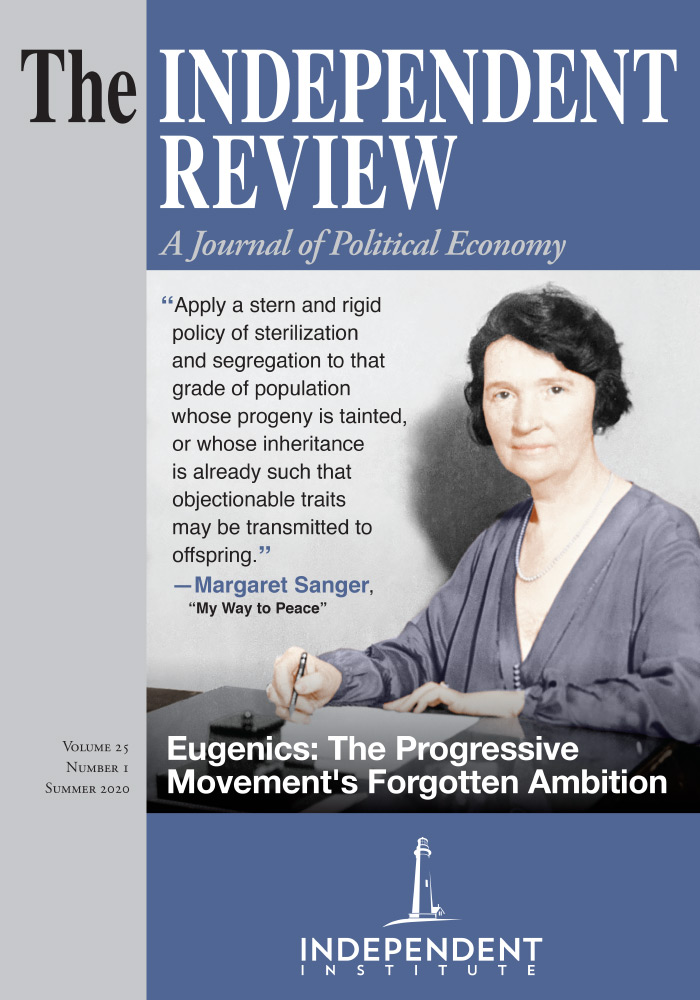 “Eugenics in High School History: Failure to Confront the Past,” by Thomas F. Cargill. The Independent Review, vol. 25, no. 1 (Summer 2020), pp. 5–25. Download PDF
“Eugenics in High School History: Failure to Confront the Past,” by Thomas F. Cargill. The Independent Review, vol. 25, no. 1 (Summer 2020), pp. 5–25. Download PDF
The history of eugenics and scientific racism is missing from America’s high school history textbooks. Is the interweaving of these ideas with the rest of progressivism and their support by the early-twentieth-century progressive movement too revealing?
“Expunging Woodrow Wilson from Official Places of Honor,” by Randy Barnett. The Volokh Conspiracy blog, June 25, 2015.
Barnett, who is a professor at the Georgetown University Law Center and Director of the Georgetown Center for the Constitution, writes, “No doubt there are others whose names should also be expunged. But because of his record of official racism and betrayal, Wilson’s name should be first on any such list. Those who oppose its removal from government buildings should explain exactly why whatever principle of tolerance they apply to so extreme a purveyor of racist policies as Wilson should not be applied equally to memorials to other historical figures as well.”
 “The Failure of State-Led Economic Development on American Indian Reservations,” by Rachel L. Mathers. The Independent Review, vol. 17, no. 1 (Summer 2012), pp. 65–80.
“The Failure of State-Led Economic Development on American Indian Reservations,” by Rachel L. Mathers. The Independent Review, vol. 17, no. 1 (Summer 2012), pp. 65–80.
Mathers writes, [T]wo factors . . . contribute to the failure of top-down, state-led economic development on American Indian reservations: (1) the state’s inability to perform economic calculation and (2) the political allocation of resources. The first factor is important because it provides a reason for the state’s inability to achieve its stated goals with the given means. Because the state operates outside the market, economic calculation is impossible, leading to the second factor, political allocation of resources outside the market, which yields several political economy problems related to bureaucracy, including perverse incentives and lack of adaptability to changing conditions.
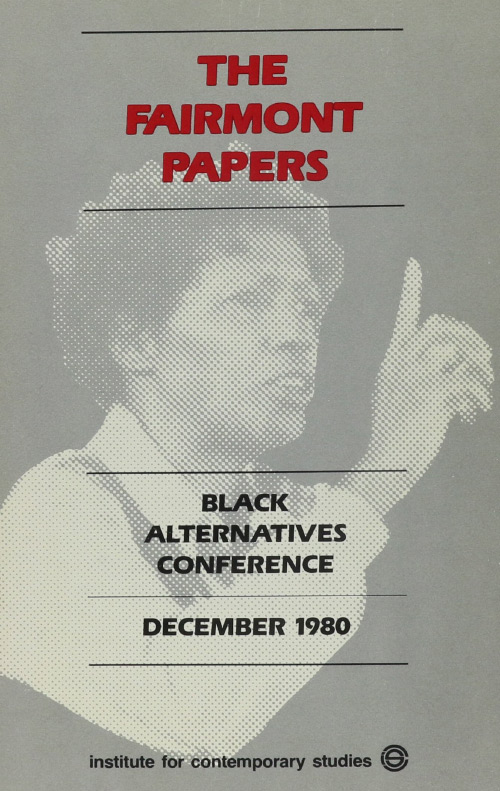 The Fairmont Papers: Black Alternatives Conference, by Thomas Sowell et al. Institute for Contemporary Studies, 1981.
The Fairmont Papers: Black Alternatives Conference, by Thomas Sowell et al. Institute for Contemporary Studies, 1981.
A collection of market-oriented papers from the 1980 Institute for Contemporary Studies conference on the unique social issues facing black Americans. Particular attention is paid to legal barriers to black success, black education, and black entrepreneurship. The introduction reads, “Thomas Sowell was the central figure in organizing the conference, both in arranging the program and in selecting speakers and other participants. . . . [S]peakers [were selected] on the basis of their expertise in four specific policy areas: the economy, education, business and the professions, and politics.”
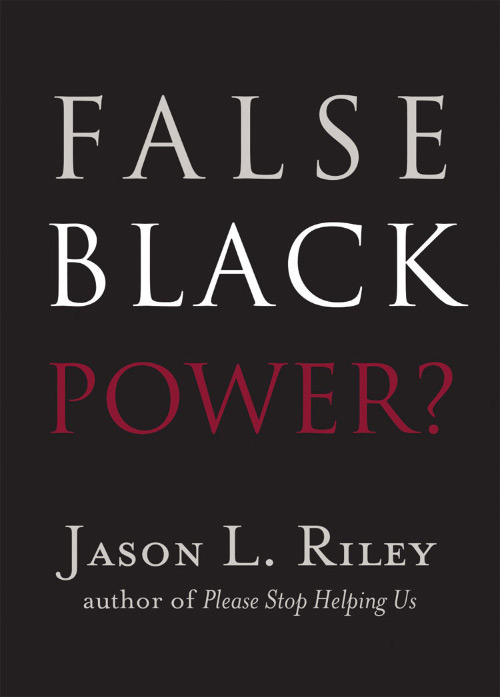 False Black Power?, by Jason L. Riley. Templeton Press, 2017.
False Black Power?, by Jason L. Riley. Templeton Press, 2017.
Wall Street Journal columnist Jason Riley writes, “I argue . . . that the current focus on white racism and political solutions to racial gaps continues to miss the mark. Our national discussions spend ample time on the impact of slavery but precious little on the black social and economic trends that followed the growth of the modern welfare state.” Includes responses from John McWhorter and from Glenn C. Loury.
“FDR’s Decision to Sign Executive Order 9066: Lessons from History,” by Greg Robinson. Paper presented at a conference, “When Presidents Fear,” sponsored by the Franklin Delano Roosevelt Foundation, March 4, 2017.
Robinson (author of By Order of the President: FDR and the Internment of Japanese Americans [Harvard University Press, 2001]) writes, “FDR’s refusal to admit the discriminatory purpose behind race-based exclusion of Japanese immigrants during the 1920s and his contention that Californians rightly objected to the Japanese presence in their midst also serves as a model for his voluntary blindness to the essential role of racial hostility and economic jealousy in motivating calls for mass removal of Japanese Americans by Californians with a long history of nativist bias. Moreover, during his 1920s [newspaper] articles, Roosevelt defended the denial of property rights to Japanese immigrants as a way to ensure racial purity. This attitude could well have contributed to Roosevelt’s unwillingness to stake steps to protect the property of the evacuees such the appointment of a strong Alien Property Custodian.”
“The Fight to Redefine Racism,” by Kelefa Sanneh. The New Yorker, August 19, 2019.
A review of Robin DiAngelo (White Fragility) and Ibram Kendi (How To Be An Antiracist). Walter Olson writes, “[In] this New Yorker piece . . . Kelefa Sanneh deftly skewers DiAngelo and brings some perspective on Kendi [whose policy prescription] is at once sophomoric and sinister.”
Fires of Hatred: Ethnic Cleansing in Twentieth-Century Europe, by Norman M. Naimark. Harvard University Press, 2001.
Naimark discusses the German National Socialist Holocaust; the Armenian genocide of 1915 and the expulsion of Greeks from Anatolia during the Greco-Turkish War of 1921-22; the Soviet forced deportation of the Chechens-Ingush and the Crimean Tatars in 1944; the Polish and Czechoslovak Communist expulsion of the Germans in 1944-47; and Bosnia and Kosovo after the breakup of Yugoslavia. He writes, “Ethnic cleansing in the twentieth century is a product of the most ‘advanced’ stage in the development of the modern state. This the era of what James Scott calls ‘high modernism,’ a state ideology which seeks to transform society into the regularized and ‘healthy’ organism that reflects the state leadership’s own needs for order, transparency, and responsiveness. ...
“High modernism has little use for minority rights, language differences, [and] asymmetrical development. ... The modern sovereign state’s inability to tolerate large minorities within its borders leads sometimes to programs of assimilation and sometimes to ethnic cleansing. ... But the impulse to homogenize is inherent to the twentieth-century state. ... [T]he twentieth-century state has also provided ... welfare, medical care, and educational benefits to the population it manages. ... In the least fortunate societies, tyrants use the state to enforce their own nightmarish racialist fantasies.”
“Frederick Douglass: Lion of Individualist Liberalism,” by Jonathan J. Bean. The Beacon blog, Independent Institute, February 21, 2018.
Bean writes, “Douglass believed that the original Constitution never sanctioned slavery because it was based on consent, a view informed by Lysander Spooner’s Unconstitutionality of Slavery (1845). Any constitutional clause in support of slavery was automatically null and void, Spooner argued, because no slave had ever consented to involuntary servitude. Like many other classical liberals of his day, Douglass used Spooner’s ingenious argument to skewer unjust laws while simultaneously upholding a moral order.
“Thus, Douglass denounced American hypocrisy in his famous ‘Fourth of July’ speech (1852) but ended his jeremiad by stating: ‘Fellow-citizens! there is no matter in respect to which, the people of the North have allowed themselves to be so ruinously imposed upon, as that of the pro-slavery character of the Constitution. In that instrument I hold there is neither warrant, license, nor sanction of the hateful thing; but, interpreted as it ought to be interpreted, the Constitution is a glorious liberty document.’ By its nature as a charter based on consent of the governed, the Constitution is inherently an anti-slavery document.”
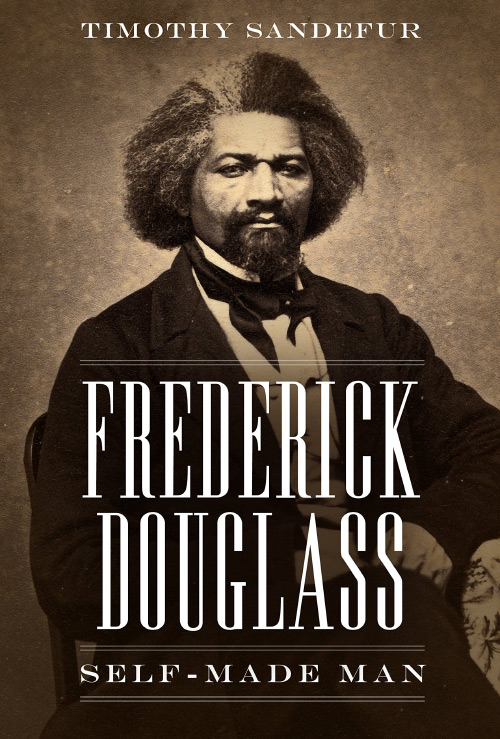 Frederick Douglass: Self-Made Man, by Timothy Sandefur. Cato Institute, 2018.
Frederick Douglass: Self-Made Man, by Timothy Sandefur. Cato Institute, 2018.
The story of the life of Frederick Douglass, one of the greatest orators in all of American history and leading voice in the abolitionist cause. Peter C. Myers writes, “From Timothy Sandefur’s elegantly written new biography, the reader gains a profound education in the life and thought of Frederick Douglass, one of the most heroic and insightful champions of liberty in this or any nation’s history. For a concise introduction to the greatness of Douglass, one could do no better than to read this book.”
 “Frederick Douglass’s Natural Rights Constitutionalism: The Postwar, Pre-Progressive Period,” by Peter C. Myers. In The Progressive Revolution in Politics and Political Science: Transforming the American Regime, edited by John Marini and Ken Masugi, Rowman & Littlefield for the Claremont Institute, 2005.
“Frederick Douglass’s Natural Rights Constitutionalism: The Postwar, Pre-Progressive Period,” by Peter C. Myers. In The Progressive Revolution in Politics and Political Science: Transforming the American Regime, edited by John Marini and Ken Masugi, Rowman & Littlefield for the Claremont Institute, 2005.
Myers writes, “Douglass’s postwar constitutionalism remains grounded in his continuing agreement with . . . the Founders’ fundamental principles. . . . Douglass was never a forerunner of Progressivism.”
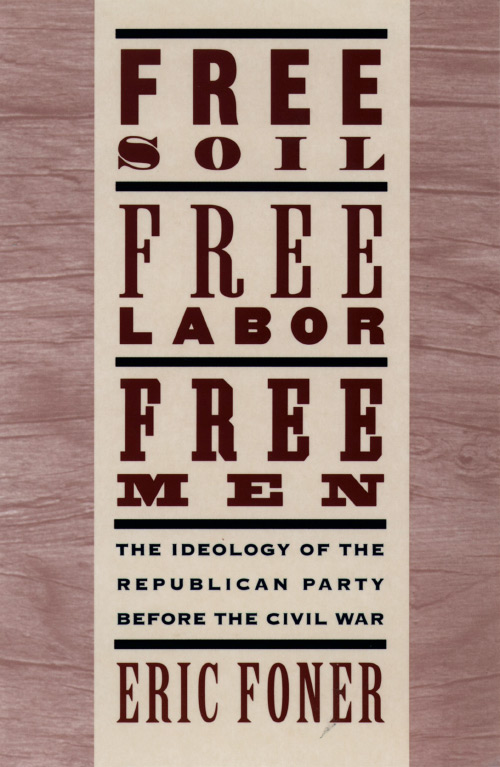 Free Soil, Free Men, Free Labor, by Eric Foner. Oxford University Press, 1995.
Free Soil, Free Men, Free Labor, by Eric Foner. Oxford University Press, 1995.
An investigation into the ideas behind the early Republican party and its historical context. Foner explains the antagonism between slavery and the evolution of “free labor ideology” along with the ideology’s accompanying legal understanding of contracted labor. Kenneth Stampp called the book, “First-rate in every respect. . . . [A] work of genuine distinction, and a major contribution to antebellum political history.”
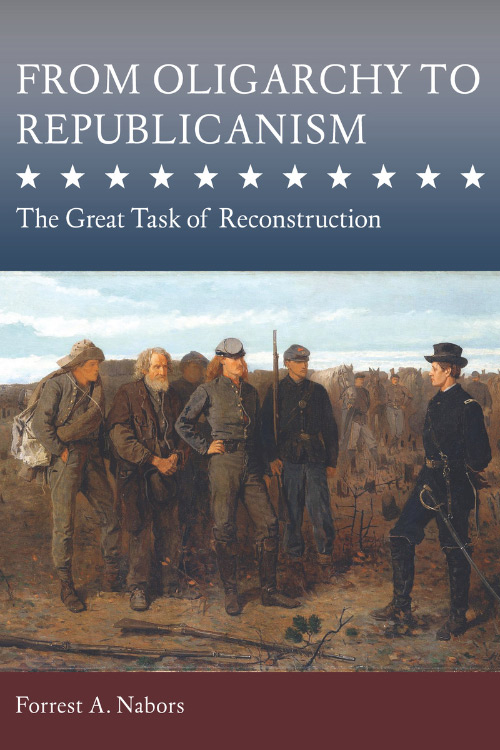 From Oligarchy to Republicanism: The Great Task of Reconstruction, by Forrest A. Nabors. University of Missouri Press, 2017.
From Oligarchy to Republicanism: The Great Task of Reconstruction, by Forrest A. Nabors. University of Missouri Press, 2017.
Will Morrisey writes, “This path-breaking, passionately argued study frames Reconstruction rightly for the first time since Reconstruction itself. Returning to what politicians North and South actually said and did, Forrest Nabors shows how the Confederacy masked a regime of oligarchy with such slogans as ‘States’ Rights’ and the ‘positive good’ of slavery. He further shows how Reconstruction aimed to settle the Civil War by restoring the rebel states to the genuine republicanism they had espoused during the American Revolution and had pledged to honor in the Constitution’s republican Guarantee Clause.”
“George S. Schuyler, Anti-Racist Champion of Liberty,” by Richard M. Ebeling. Daily Economy blog (American Institute for Economic Research), August 19, 2019.
Richard Ebeling writes, “I explain [George Schuyler's] uncompromising, biting, and often sarcastic ridicule for white American racism against black Americans in the 1920s, 1930s, 1940s and the 1950s. He was kept under FBI surveillance during the Second World War for his “subversive” public statements that all Americans should be treated equally under the law. And for criticizing the internment of Japanese-Americans by FDR’s government.”
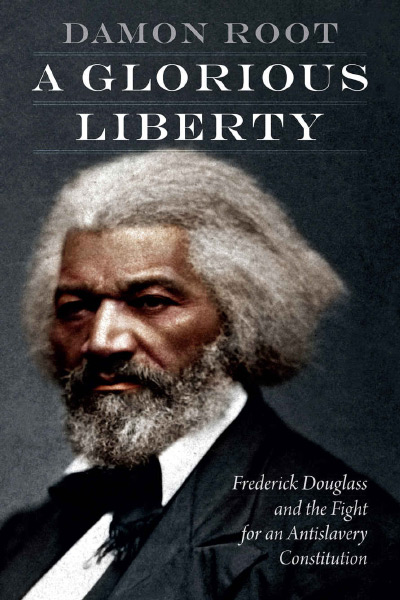 Review by Timothy Sandfeur of A Glorious Liberty: Frederick Douglass and the Fight for an Antislavery Constitution by Damon Root,” The Objective Standard, February 9, 2021.
Review by Timothy Sandfeur of A Glorious Liberty: Frederick Douglass and the Fight for an Antislavery Constitution by Damon Root,” The Objective Standard, February 9, 2021.
Sandfeur writes, “A devoted admirer of the radical abolitionist William Lloyd Garrison, [Frederick Douglass] initially embraced Garrison’s view that the Constitution was poisoned to its core by its compromises with slavery and that the only path to justice lay in repudiating it....
Douglass seriously examined the subject for years, devouring complex books of constitutional law and history, particularly those by Lysander Spooner, William Goodell, and [Gerrit] Smith himself. It was only after four years of careful examination that Douglass announced that he had been persuaded. The Constitution was not a “pact with hell” as Garrison had taught him; instead, it was an antislavery document, at least in principle, and a potential tool for abolition....
Douglass never surrendered to the arguments of those—black as well as white—who said America was a land only for white people and that former slaves and their children should leave for colonies in Africa or Central America. Today, similarly nihilistic arguments are voiced in the “1619 Project” and in the works of Ibram Kendi, Ta-Nehisi Coates, and others, who characterize the United States as a white supremacist nation. Douglass refused to accept this during his life, and his intellectual work remains a powerful refutation of those who, while claiming to speak on behalf of the oppressed, actually embrace the same arguments that pro-slavery intellectuals made a century and a half ago.
The Governor Eyre Controversy, by Bernard Semmel. London: MacGibbon & Kee, 1962.
In 1865 in response to black unrest in Jamaica, the British governor John Eyre sent out troops who committed hundreds of atrocities on blacks and kidnapped and hanged under martial law an alleged (but actually innocent) mixed-race organizer. In Britain, classical liberal philosopher John Stuart Mill organized the Jamaica Committee, which called (unsuccessfully) for the prosecution of Eyre. Among the members of the committee were such classical liberals as John Bright, Frederic Harrison, Herbert Spencer, A. V. Dicey, Leslie Stephen, Thomas Hill Green, and Henry Fawcett. Also members were scientists Charles Darwin, Thomas Henry Huxley, and Charles Lyell, together with Thomas Hughes, the author of the novel Tom Brown’s School Days. On the other side, Thomas Carlyle established the Governor Eyre Defence and Aid Committee. Eyre’s supporters included John Ruskin, Charles Kingsley, Charles Dickens, Alfred Lord Tennyson, and Lord Cardigan (leader of the Crimean War “charge of the Light Brigade”).
The controversy created a battle line between British classical liberal intellectuals and their illiberal opponents. According to Huxley, the Eyre controversy served as a political litmus test for Victorian intellectuals: “In point of fact, men take sides on this question, not so much by looking at the mere facts of the case, but rather as their deepest political convictions lead them. And the great use of the prosecution[of Eyre],and one of my reasons for joining it, is that it will help a great many people to find out what their profoundest political beliefs are.”
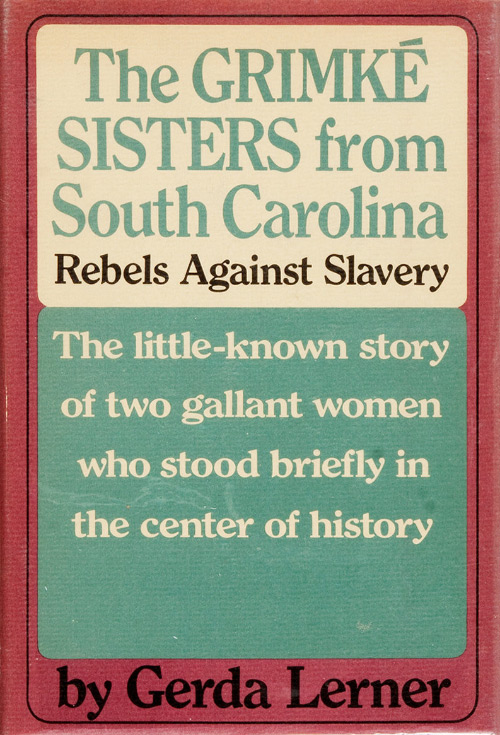 The Grimké Sisters from South Carolina: Rebels Against Slavery, by Gerda Lerner. Houghton Mifflin Company, 1967.
The Grimké Sisters from South Carolina: Rebels Against Slavery, by Gerda Lerner. Houghton Mifflin Company, 1967.
A best-selling biography of Sarah and Angelina Grimké, who were born into a slave-holding family, only to reject the institution, and became national champions of abolitionism. They were the best-known white female abolitionists in America in the mid-nineteenth century and faced considerable social opprobrium for speaking in public before mixed audiences.
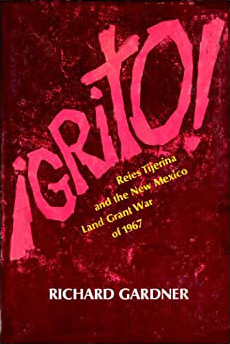 ¡Grito!: Reies Tijerina and the New Mexico Land Grant War of 1967, by Richard M. Gardner. Bobbs-Merrill, 1970.
¡Grito!: Reies Tijerina and the New Mexico Land Grant War of 1967, by Richard M. Gardner. Bobbs-Merrill, 1970.
The story of Reies López Tijerina, founder of the Alianza Federal de Mercedes, and of his fight for the property rights of the heirs of land grant holders in New Mexico.
“Hitler and the Socialist Dream,” by George G. Watson. The Independent (UK), November 22, 1998.
Cambridge University professor Watson writes, “[T]here were, . . . in Marx’s view, races that would have to be exterminated. That is a view he published in January-February 1849 in an article by Engels called ‘The Hungarian Struggle’ in Marx’s journal the Neue Rheinische Zeitung. . . . The Marxist theory of history required and demanded genocide for reasons implicit in its claim that feudalism was already giving place to capitalism, which must in its turn be superseded by socialism. Entire races would be left behind after a workers’ revolution, feudal remnants in a socialist age; and since they could not advance two steps at a time, they would have to be killed. They were racial trash, as Engels called them, and fit only for the dung-heap of history.”
How FDR Killed Federal Anti-Lynching Legislation, by Phillip W. Magness. American Institute for Economic Research, July 31, 2020.
Magness tells of President Franklin D. Roosevelt’s desire to outmaneuver the Presidential ambitions of his Vice President John Nance Gardner during the run-up to the 1940 election. Gardner had switched to supporting the federal anti-lynching bill (which he had previously opposed) for the express reason of locking in the African-American vote. But FDR deliberately declined to endorse Gardner’s initiative. Among other things, FDR’s purposeful inaction led boxer Joe Louis to endorse FDR’s Republican rival Wendell Wilkie for President.
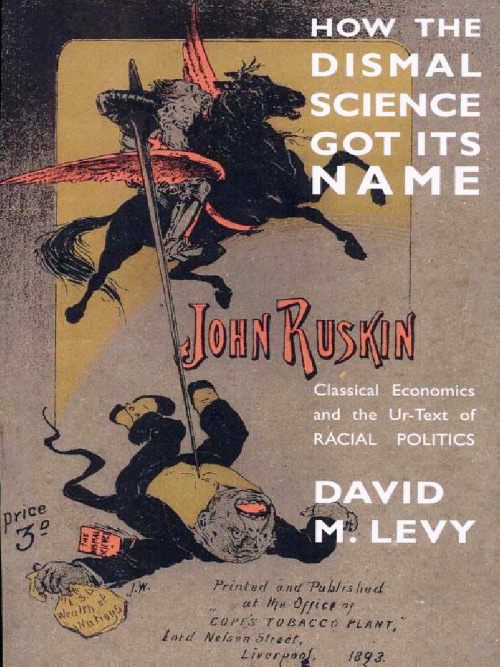 How the Dismal Science Got Its Name: Classical Economics and the Ur-Text of Racial Politics, by David M. Levy. University of Michigan Press, 2001.
How the Dismal Science Got Its Name: Classical Economics and the Ur-Text of Racial Politics, by David M. Levy. University of Michigan Press, 2001.
Publisher’s promotional material: “It is widely asserted that the Victorian sages attacked classical economics from a humanistic or egalitarian perspective, calling it ‘the dismal science,’ and that their attack is relevant to modern discussions of market society. David M. Levy here demonstrates that these assertions are simply false: political economy became ‘dismal’ because Carlyle, Ruskin, and Dickens were horrified at the idea that systems of slavery were being replaced by systems in which individuals were allowed to choose their own paths in life. At a minimum, they argued, ‘we’ white people ought to be directing the lives of ‘them,’ people of color. Economists of the time argued, on the other hand, that people of color were to be protected by the rule of law—hence the moniker ‘the dismal science.’”
“How to Be a Better—and Less Fragile—Antiracist,” by Peter Minowitz. (A review of White Fragility by Robin DiAngelo; and How to Be an Antiracist by Ibram X. Kendi.)
Minowitz writes, “Like so many progressives, Kendi uses equity as a synonym for equality; he ignores its centuries-long associations with fairness, which sometimes obliges us to reward individuals who contribute more....
“What might count as a ‘racist’ idea? Consider three of the bullet points the National Museum of African-American History and Culture posted to illuminate ‘Aspects & Assumptions’ of American ‘whiteness’: ‘Objective, rational linear thinking. Cause and effect relationships. Quantitative emphasis.’ ... Kendi himself provides a long list of terms—handout, entitlements, colorblind, reverse discrimination, personal responsibility, race card, and even ‘economic anxiety’—that are currently deployed ‘to evade admissions of racism.’”
“How Woodrow Wilson Denied African-Americans an Academic Education,” by Williamson M. Evers. Education Week, December 9, 2015.
Evers writes, “In this project, the Wilson administration worked with a leading figure from the world of philanthropy, Thomas Jesse Jones. . . . He was the author of the [federal] report Negro Education that said that African-Americans should only have a vocational, non-academic education. . . . Jones, of course, was hardly the only progressive intellectual at the time to advocate a vocational-only education for African-Americans. Other prominent progressives who did so include Walter Hines Page, Ray Stannard Baker, President Theodore Roosevelt, and John Dewey. In Schools of Tomorrow (1915), Dewey and his daughter Evelyn depict an all-African-American vocational school in Indianapolis in which young people had an almost entirely non-academic curriculum. Then the Deweys contend that such an education was appropriate for children from African-American and immigrant households.”
“Hypocrite Hector,” by Anthony Daniels. (A review of White Fragility by Robin DiAngelo; and How to Be an Antiracist by Ibram X. Kendi.) New Criterion, vol. 39, no. 1 (September 2020).
Daniels writes, “These two best-selling books about racism—White Fragility, by Robin DiAngelo, and How to Be an Antiracist, by Ibram X. Kendi—are tedious not because they are long but because of their almost unrelievedly hectoring tone. You feel in reading them that you have been cornered at a party by a monomaniac who will not let you escape until he has preached you into total silence, if not acquiescence. ...
“DiAngelo’s book displays a curious admixture of influences: the Chinese Cultural Revolution, Jimmy Swaggart, Freudian psychoanalysis, and Uriah Heep, the four of them being present in approximately equal proportion. ... [Kendi does not] recognize, even faintly, that to bring about the equality between groups that he believes is the only equitable arrangement for society would require a totalitarian regime that would make North Korea seem like a libertarian’s dream.
“I Must Object: A Rebuttal to Brown University’s Letter on Racism in the United States,” by Glenn C. Loury. City Journal, June 5, 2020.
Social scientist Loury writes, “I deeply resented the letter. First of all, what makes an administrator (even a highly paid one, with an exalted title) a ‘leader’ of this university? We, the faculty, are the only ‘leaders’ worthy of mention when it comes to the realm of ideas. Who cares what some paper-pushing apparatchik thinks? It’s all a bit creepy and unsettling. Why must this university’s senior administration declare, on behalf of the institution as a whole and with one voice, that they unanimously—without any subtle differences of emphasis or nuance—interpret contentious current events through a single lens?”
“The Ideology of the Young Turk Movement,” by Gerard Libaridian. In A Crime of Silence, The Armenian Genocide: Permanent Peoples’ Tribunal, edited by Gerard Libaridian, Zed Books, 1985, pp. 37–49. Download PDF
The Young Turk movement—which ran the Ottoman Empire during the First World War and presided over the Armenian Genocide—broke with the classical liberal aspirations of the Young Ottomans, sloughed off the Liberal Age goals of the Tanzimat reforms, and substituted exclusionary Turkic nationalism as a legitimating ideology.
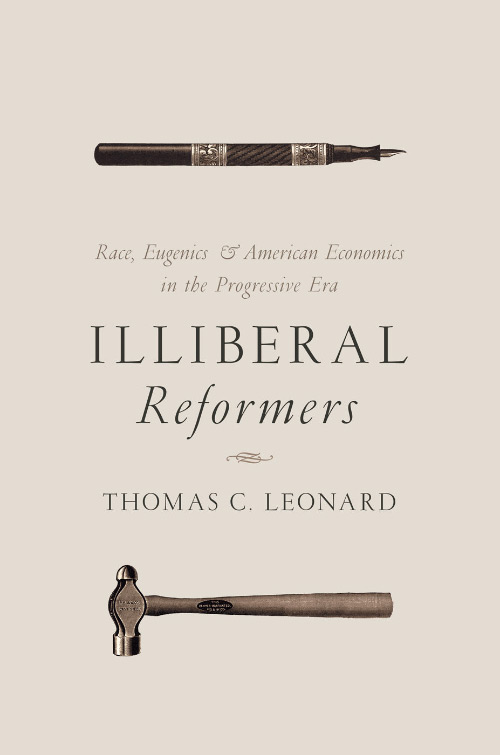 Illiberal Reformers: Race, Eugenics, and American Economics in the Progressive Era, by Thomas C. Leonard. Princeton University Press, 2017.
Illiberal Reformers: Race, Eugenics, and American Economics in the Progressive Era, by Thomas C. Leonard. Princeton University Press, 2017.
Virginia Postrel writes, “Leonard . . . brings to light an embarrassing truth: In the early twentieth century, the progressive definition of the common good was thoroughly infused with scientific racism. Harvard economist William Z. Ripley, for example, was a recognized expert on both railroad regulation and the classification of European races by coloring, stature and ‘cephalic index,’ or head shape. At the University of Wisconsin, the red-hot center of progressive thought, leading social scientists turned out economic-reform proposals along with works parsing the racial characteristics—and supposed natural inferiority—of blacks, Chinese, and non-Teutonic European immigrants. . . . ‘The “race suicide” of the American or colonial stock should be regarded as the most fundamental of our social problems,’ the Wisconsin economist John R. Commons wrote in 1920. His colleague Edward A. Ross, who popularized the terms ‘social control’ and ‘race suicide,’ called interest in eugenics ‘a perfect index of one’s breadth of outlook and unselfish concern for the future of our race.” Malcom Harris writes in The New Republic magazine, “Among his revelations: The minimum wage was created to destroy jobs; progressives (including the founders of this magazine) really did hate small businesses and they were all way too enthusiastic about Germany’s [Bismarckian] social structure.”
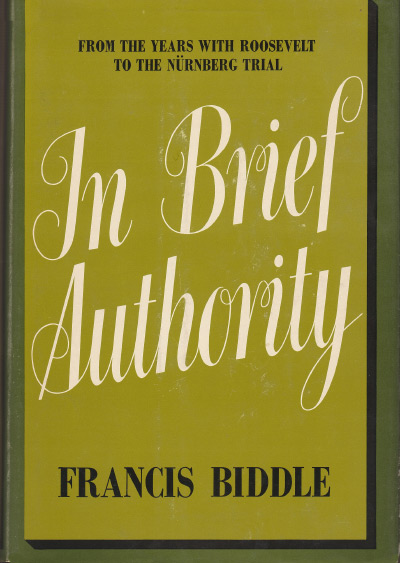 In Brief Authority, by Francis Biddle. Greenwood Press, 1976.
In Brief Authority, by Francis Biddle. Greenwood Press, 1976.
These are the memoirs (originally published in 1962) of the Attorney General of the United States under President Franklin D. Roosevelt. Chapter 13, “Evacuation of the Japanese,” is the most important for our purposes. Apologists for Roosevelt say that forcible internment based on ancestry was done to protect Japanese-Americans from violent vigilante groups; that no one inside the administration raised any misgivings based on civil liberties or the unnecessariness of the policy; that internment interrupted ongoing sabotage; that it interrupted espionage directed at naval and shipping activity, and that it blocked enemy agents from using stockpiles of munitions and photographic equipment. All of this, Biddle shows, is false. Biddle condemns by name progressive California Gov. Culver Olson, progressive California Attorney General Earl Warren, Congressman Leland M. Ford from Santa Monica, reformist Los Angeles mayor Fletcher Bowron, the liberal Los Angeles Daily News newspaper, and liberal columnist Walter Lippmann. He discusses the “special group pressure” from the California Farm Bureau Federation and the Western Growers Protective Association—pressure that I would say was based on envy and covetousness. Biddle cites the judgment of the American Civil Liberties Union that the internment was “the worst single wholesale violation of civil rights of American citizens in our history.”
“Indian Lands, Indian Subsidies, and the Bureau of Indian Affairs,” by Chris Edwards. DownsizingGovernment.org, Cato Institute, 2012.
Edwards writes, “One of the historic reasons why the federal government variously exploited, coddled, and micromanaged Indians was because of the belief that they were primitive socialists with no understanding of market institutions such as property rights. But research has found that stereotype to be false. One recent study argues that ‘most if not all North American indigenous peoples had a strong belief in individual property rights and ownership.’ Various tribes in North America developed systems of property rights in farm lands, garden plots, horses, fishing streams, fur-trapping territories, hunting grounds, and other resources. Research has also found that Indians were very entrepreneurial and had extensive trading networks.”
“Individualism Versus Racism,” by Anne Wortham. The Freeman, vol. 16, no. 1 (January 1966).
Wortham writes, “No rational, self-responsible individual relies upon the racism that plagues the nation. He does not beg for patronage, sympathy, and smiles. Instead of asking that others grant him a living, he knows he has been born with an inalienable right to whatever life he is capable of earning, according to his own purpose, his own virtues, which others cannot give to him and cannot take away.”
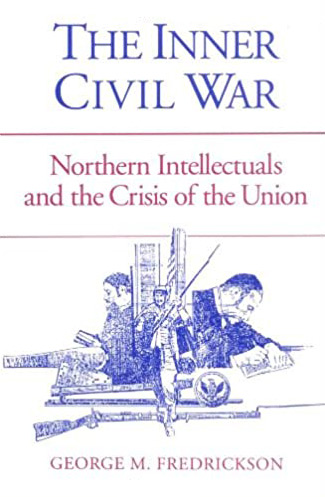 The Inner Civil War: Northern Intellectuals and the Crisis of the Union, by George M. Fredrickson. University of Illinois Press, Second Edition, 1993.
The Inner Civil War: Northern Intellectuals and the Crisis of the Union, by George M. Fredrickson. University of Illinois Press, Second Edition, 1993.
Before the Civil War, Northern reformist intellectuals opposed what they saw as oppressive institutions, such as slavery, denial of civil rights to women, and intrusive government. They hoped the war would purge society of these blights. Slavery was indeed abolished but by military force, not through a change of heart about blacks’ human dignity amongst Southern whites. Indeed, the experience of wartime conditions and the battlefield led many onetime reformist intellectuals to abandon their individualism and take up, as Oliver Wendell Holmes Jr. did, a kind of pragmatic deference to governmental power.
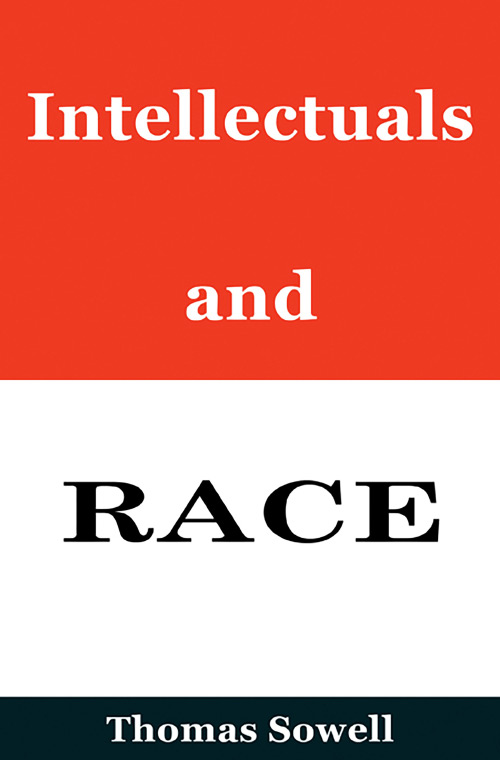 Intellectuals and Race: An International Perspective, by Thomas Sowell. Basic Books, 2013.
Intellectuals and Race: An International Perspective, by Thomas Sowell. Basic Books, 2013.
Sowell writes, “The Progressive era was the heyday of eugenics, the attempt to prevent excessive breeding of the ‘wrong’ kind of people. . . . The New Republic lamented ‘the multiplication of the unfit, the production of a horde of unwanted souls.’ . . . [L]eaders and supporters of the eugenics movement included people on the left, such as John Maynard Keynes, who helped create the Cambridge Eugenics Society, as well as H. G. Wells, George Bernard Shaw, Harold Laski, Sidney Webb, and Julian Huxley. . . . Madison Grant’s The Passing of the Great Race . . . was a landmark book of its era. . . . Hitler called it his ‘Bible.’ . . . Politically, [Grant] was a Progressive and activist on issues important to Progressives, such as conservation, endangered species, municipal reform, and the creation of national parks.”
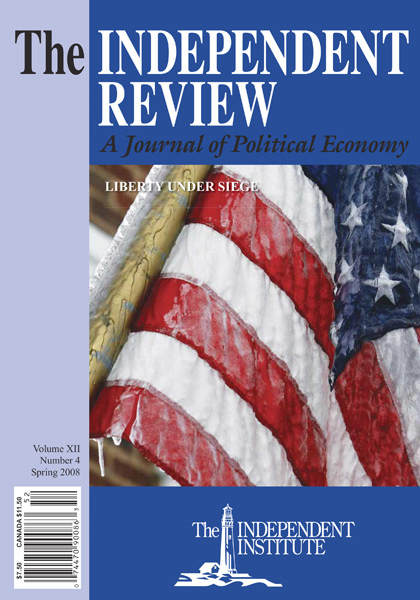 “Isabel Paterson, Rose Wilder Lane, and Zora Neale Hurston on War, Race, the State, and Liberty,” by David T. Beito and Linda Royster Beito. The Independent Review, vol. 12, no. 4 (Spring 2008). Download PDF
“Isabel Paterson, Rose Wilder Lane, and Zora Neale Hurston on War, Race, the State, and Liberty,” by David T. Beito and Linda Royster Beito. The Independent Review, vol. 12, no. 4 (Spring 2008). Download PDF
The Beitos write, “[Zora Neale] Hurston’s anticommunism put her at odds with many in the Harlem Renaissance, including one-time Communist collaborator Langston Hughes. In her view, the Communist Party’s attempt to enforce conformity and to promote economic equality ran contrary to human nature and American ideals. ... Hurston characterized [President Franklin D.] Roosevelt’s relief program as ‘the biggest weapon ever placed in the hands of those who sought power and votes.’ Those who became dependent ‘gradually relaxed their watchfulness and submitted to will of the “Little White Father,” more or less.’ ...
“[Hurston] touted the presidential ambitions of Ohio senator Robert A. Taft, the then-acknowledged leader of the Old Right. ... [S]he saw Taft as the best hope to break black dependence on the New Deal welfare state. ... A letter to the editor opposing the Brown v. Board of Education Supreme Court decision brought Hurston back into the limelight. Had she shifted from her earlier opposition to Jim Crow? Not really. For her, a trade-off had to be made. Although she continued to oppose segregation, she feared that Brown would further empower a tyrannical federal government to threaten individual rights as well as to undermine black schools.”
“John Maynard Keynes, H. G. Wells, and a Problematic Utopia,” by Phillip W. Magness and James R. Harrigan. History of Political Economy, vol. 52, no. 2 (2020), pp. 211–38.
The authors write, “In this article we explore the intellectual origins of John Maynard Keynes’s ‘Economic Possibilities’ by introducing evidence of its parallels to a similar utopian message in H. G. Wells’s obscure didactic novel, The World of William Clissold (1926). . . . The context . . . sheds light upon the authors’ shared interests in the ‘scientific’ ordering of society, and in particular a vision of the future that relied heavily upon proactive eugenic planning. . . . [T]hese findings establish deeper eugenic commitments in Keynes’s beliefs than previously thought and extend them into the mature phase of his economic writing.”
“John T. Flynn on Japanese Internment Camps,” History News Network, August 9, 2012.
Flynn, a classical liberal journalist and political commentator, called the Japanese American internment under President Franklin D. Roosevelt “one of the greatest assaults on civil liberties in our century.”
“Judicial Power and Civil Rights Reconsidered,” by David E. Bernstein and Ilya Somin. Yale Law Journal, vol. 114, no. 3 (2004). Review essay of Michael Klarman’s From Jim Crow to Civil Rights. Download PDF
Bernstein and Somin write, “Even in a situation where efforts to enforce white supremacy did not suffer from collective action problems because the contributions of an individual white could have a substantial impact in their own right, that individual might still choose not to act because of the high cost of doing so. Jim Crow laws could alleviate this reluctance by externalizing some or all of the costs of enforcement from those individual whites to society as a whole.”
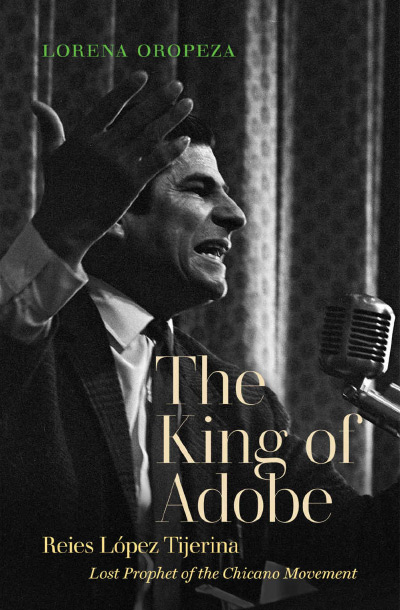 The King of Adobe: Reies López Tijerina, Lost Prophet of the Chicano Movement, by Lorena Oropeza. University of North Carolina Press, 2019
The King of Adobe: Reies López Tijerina, Lost Prophet of the Chicano Movement, by Lorena Oropeza. University of North Carolina Press, 2019
A scholarly biography of Reies López Tijerina, who led a Latino group called the Alianza Federal de Mercedes (the Federal Alliance of Land Grants). In 1967, Tijerina led an armed takeover of a New Mexico courthouse in the name of land rights for dispossessed Mexican-Americans and American Indians. Here was a 1960s American radical movement made up of members of an ethnic minority and founded on respect for property rights.
Oropeza writes, “Alianza members wanted only [as Tijerina put it] what ‘deceit and fraud has snatched away from them,’ namely land granted to their families by the Spanish and Mexican government before the hostile takeover of Mexico’s far north in 1848. The United States had promised to respect these property rights in the Treaty of Guadalupe Hidalgo.” Tijerina essentially said that Latinos and American Indians in the Southwest had family ties and a common culture as well as a shared heritage of dispossession by the U.S. government. As Oropeza points out, Tijerina “rarely acknowledged” that Spanish conquistadores had earlier violated the property rights of American Indians. Tijerina saw “Indo-Hispanos” as a single mixed race people who were victims of U.S. expropriation.
“Labor Unions and the Negro: The Record of Discrimination,” by Herbert Hill. Commentary, December 1959.
Herbert Hill was the labor director of the National Association for the Advancement of Colored People (NAACP). Hill writes, “Many [labor] unions have a long history of racial discrimination—and it is this tradition of discrimination which is responsible, at least in part, for the marginal status that Negro wage earners have today in key sectors of the American economy. The Negro worker’s historical experience with organized labor has not been a happy one. In the South, unions frequently acted to force Negroes out of jobs that had formerly been considered theirs. . . . Unionization in the South often led to the redesignating of ‘Negro jobs’ as ‘white man’s work,’ and even to excluding Negroes from entire industries. In the North, . . . as Gunnar Myrdal stated in An American Dilemma, ‘most of the time [the unions] effectively kept Negroes out of skilled work.’”
Laissez-Faire and the Chinese Persecutions in San Francisco,” by Thomas Jacobsen. Rampart Journal of Individualist Thought, vol. iv, no. 3 (Fall 1968), pp. 39–44.
Rod Manis writes, “[Jacobsen tells] how the Workingmen’s Party in San Francisco used public health ordinances to limit the competition that whites were getting from successful Chinese enterprises and workers.”
“Land Grants Problems Among the State’s Spanish Americans,” by Clark S. Knowlton. New Mexico Business, vol. 20, no. 6 (June 1967), pp. 1–13.
Knowlton was the head of the department of sociology at the University of Texas at El Paso. He writes, “Large numbers of Spanish-Americans are convinced that they were unjustly deprived of their lands by Anglo-Americans. The inhabitants of almost every Spanish-American village in the State [of New Mexico] can relate old and unhappy stories about the way their families and villages were deprived of their lands.”
“A Libertarian Who Stood on Principle When It Mattered,” by Wendy McElroy. Freedom Daily, November 1, 2011.
McElory writes, “What [R. C. Hoiles, co-publisher of the Orange County Register] did was to speak out against an injustice [FDR’s internment of Japanese-Americans] at the point when it had overwhelming public support. After the war, it became popular and politic to defend the Nisei. But Hoiles spoke out when it counted most—while the injustice was occurring. He did not act in self-promotion; he spoke out of simple decency.” The Japanese-American Citizens League said, “Mr. Hoiles was the only [publisher] with the courage of his convictions in taking a strong editorial stand against evacuation and relocation of more than 110,000 Japanese-Americans on the West Coast during World War II. In his editorials in The Register and other Freedom Newspapers, Mr. Hoiles challenged the government’s right forcibly to relocate American citizens.”
“Liberty in Perfection: Freedom in Native American Thought,” by Amy H. Sturgis. Ideas on Liberty, September 1, 1999.
Sturgis writes, “Beyond the need for coalition, the Iroquois maintained a structure of checks and balances not unlike the U.S. tripartite system. The Cherokees’ right of dissent and withdrawal, a version of conscientious objection, further protected the rights of those in the minority. . . .
“In the modern era, much of the mainstream has fallen prey to the stereotype of the native American as the proto-socialist communitarian whose sense of self was irretrievably anchored in his polity. It is true that the Amerindians valued civic participation, but not for the same reasons as the orators of Western antiquity. The Iroquois and the Cherokees did not value the process of a democratic republic because it consumed their identity; they valued it because it protected their individuality. The political debate from the Cherokee town council to the Iroquois Grand Council limited by law what the group could do to the person. Participation ensured liberty. It was for this reason that [Cadwallader] Colden explained: ‘When Life and Liberty came in competition, indeed, I think our Indians have outdone the Romans.’”
“Loco, Completamente Loco: The Many Failures of ‘Bilingual Education,’” by Glenn Garvin. Reason Magazine, January 1998.
Garvin writes, “Bilingual education was born [many decades] ago from a good-hearted but vague impulse by Congress to help Spanish speakers learn English. Instead, it has become a multi-billion-dollar hog trough that feeds arrogant education bureaucrats and militant Hispanic separatists. And now poor immigrant parents increasingly see it as the wall around a linguistic ghetto from which their children must escape if they want to be anything more than maids or dishwashers.
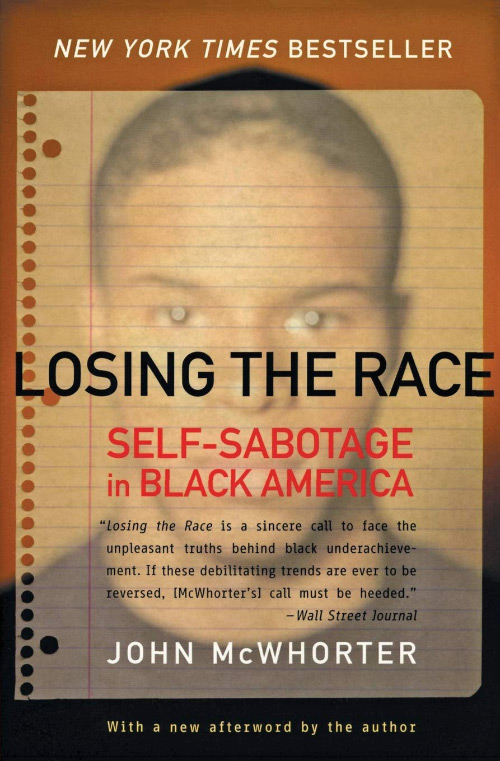 Losing the Race: Self-Sabotage in Black America, by John H. McWhorter. Harper Perennial, 2001.
Losing the Race: Self-Sabotage in Black America, by John H. McWhorter. Harper Perennial, 2001.
McWhorter argues that the main obstacle to black Americans is not external racism, but “certain ideological holding patterns that are today much, much more serious barriers to black well-being.” One of those is a self-perpetuating identity of victimhood. The Kirkus review says, “McWhorter . . . offers persuasive analysis and proof that all African-Americans, regardless of class, are seriously affected by separatism and anti-intellectualism; he believes that the latter is mostly responsible for their children’s continued poor academic showing.”
“Lyndon B. Johnson and Blacks: The Early Years,” by Monroe Billington. The Journal of Negro History, vol. 62, no. 1 (January 1977), pp. 26–42.
President Barack Obama once said “During his first twenty years in Congress, [Lyndon Johnson] opposed every civil rights bill that came up for a vote, once calling the push for federal legislation a farce and a shame.” Billington goes into the details: “Was [Lyndon B. Johnson] consistent throughout his [political] career regarding civil rights for blacks? Or was he an expedient politician who desired only to advance his own career by yielding to current pressures? . . . Johnson . . . voted against an anti-lynching bill in 1940, as well as anti-poll tax bills in 1942, 1943, 1945, and 1947. During the Second World War when Congress desired to provide more convenient absentee ballots for overseas soldiers, he voted with southerners who favored a state (as opposed to a federal) ballot, so that the states could control the voting process (i.e. regulate the black vote). . . . Johnson publicly aligned himself with the southern bloc [on issues of anti-lynching, voting rights, and employment discrimination] less than two months after he took the oath of office as a senator in January 1949.”
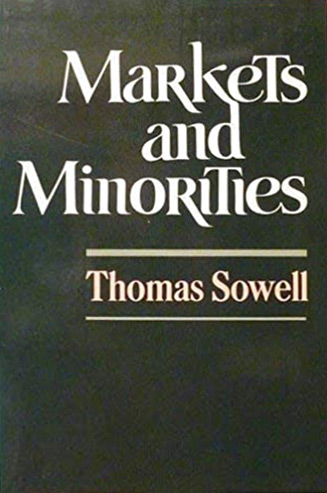 Markets and Minorities, by Thomas Sowell. Basic Books, 1981.
Markets and Minorities, by Thomas Sowell. Basic Books, 1981.
From the introduction: “This book applies basic economic principles to the study of racial and ethnic minorities. . . . Theories will be confronted with facts. . . . For example, the degree of racial residential integration in American cities was often far greater in the last quarter of the nineteenth century (when no real effort was made to achieve it) than in the last quarter of the twentieth century. . . . This is difficult—if not impossible—to explain in terms of the more conventional theories of racial relations.”
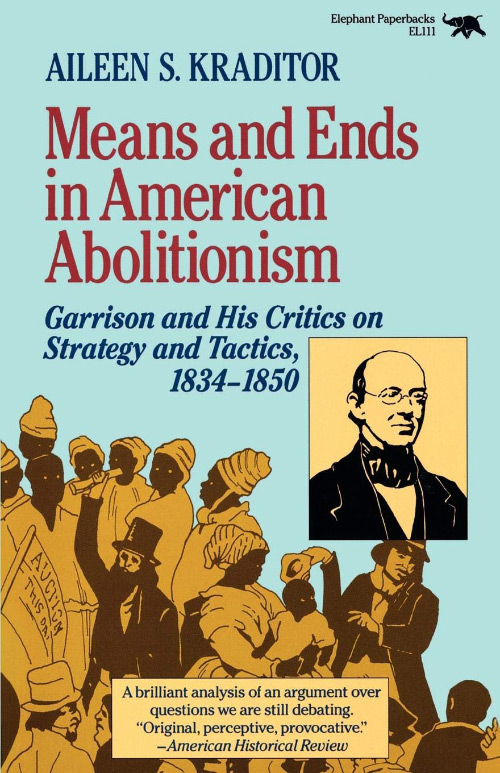 Means and Ends in American Abolitionism: Garrison and His Critics on Strategy and Tactics, 1834-1850, by Aileen S. Kraditor. Ivan R. Dee, 1989.
Means and Ends in American Abolitionism: Garrison and His Critics on Strategy and Tactics, 1834-1850, by Aileen S. Kraditor. Ivan R. Dee, 1989.
William Lloyd Garrison is remembered for supporting the immediate abolition of slavery. This book takes a deeper look into Garrison’s strategy. Don E. Fehrenbacher in American Historical Review calls Kraditor’s book, “Superior to anything else published on the subject.”
“Native American Reservations: Socialist Archipelago,” by Andrei Znamenski. Mises Daily, Ludwig von Mises Institute, 2013.
Znamenski writes, Imagine a country that has a corrupt authoritarian government. In that country no one knows about checks and balances or an independent court system. Private property is not recognized in that country either. Neither can one buy or sell land. And businesses are reluctant to bring investments into this country. Those who have jobs usually work for the public sector. Those who don’t have jobs subsist on entitlements that provide basic food. At the same time, this country sports a free health care system and free access to education. Can you guess what country it is? It could be the former Soviet Union, Cuba, or any other socialist country of the past. Yet, I want to assure you that such a country exists right here in the United States, [on] Native American reservations. ...
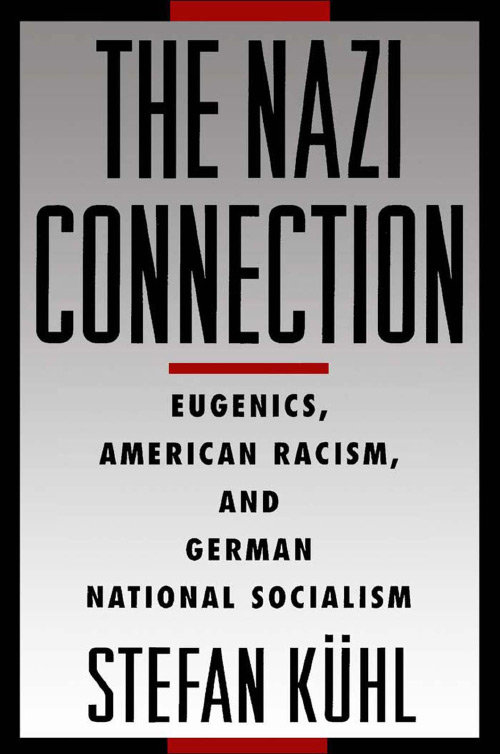 The Nazi Connection: Eugenics, American Racism, and German National Socialism, by Stefan Kühl. Oxford University Press, 1994.
The Nazi Connection: Eugenics, American Racism, and German National Socialism, by Stefan Kühl. Oxford University Press, 1994.
Kühl writes, “[Progressive and conservationist] Madison Grant wrote to his friend [Harry H.] Laughlin that, although ‘most people of our type’ [that is, fellow eugenicists] were in sympathy with Germany’s [racial policy] actions, eugenicists had to ‘proceed cautiously in endorsing them.’” Sheila Faith Weiss writes “The author argues that the continued support given by American eugenicists to their German colleagues prior to the United States’ entry into World War II, and (more specifically) their endorsement of most aspects of Nazi racial policy, constituted a critical source of scientific legitimation for Hitler’s ‘racial state.’ In advancing his thesis, the German historian and sociologist Kühl takes issue with much of the historiography of American eugenics. He is also at pains to point out that, contrary to conventional wisdom, it was not merely a small handful of extremist and marginalized American eugenicists who were initially impressed by the rhetorical initiatives of Nazi race hygienists, and that this substantial (in Kühl’s opinion) group of American eugenicists did not dampen their enthusiasm for German race hygiene once the Nazis began turning rhetoric into reality.”
“The Negro and the New Freedom: Fighting Wilsonian Segregation,” by Nancy J. Weiss. Political Science Quarterly, vol. 84, no. 1 (March 1969), pp. 61–79.
Weiss writes, “Progressivism and racism were in many respects interdependent. . . . Accustomed by imperial design and judicial decision to thoughts of racial superiority, white America linked Progressive democracy and equality to greater separation from the Negroes.”
“The New Deal Goes South,” by David E. Bernstein. Review of Ira Katznelson’s Fear Itself: The New Deal and the Origins of Our Times, Reason.com, May 21, 2013.
Bernstein writes, “[P]erhaps the biggest disappointment in Fear Itself is Katznelson’s missed opportunity to address an important and under-researched issue: how an early-twentieth-century economic progressivism that willingly accommodated segregation, eugenics, and other manifestations of racism evolved by the early 1960s into the racially tolerant liberalism we know today. . . . [F]rom the Civil War through the New Deal period there was no correlation between an American’s views on economic policy and on civil rights. As late as 1952, Democratic presidential nominee Adlai Stevenson, who had a reputation as a liberal intellectual but a mixed record at best on civil rights issues, chose Alabama Sen. John Sparkman, a staunch Jim Crow supporter, as his running mate.”
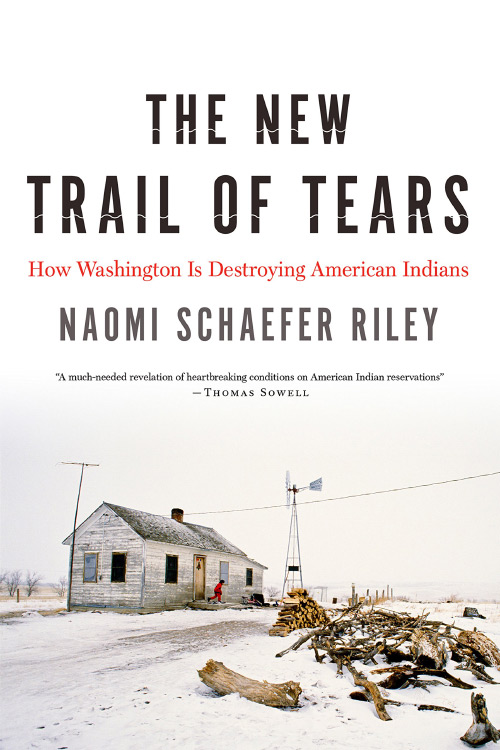 The New Trail of Tears: How Washington Is Destroying American Indians, by Naomi Schaefer Riley. Encounter Books, 2016.
The New Trail of Tears: How Washington Is Destroying American Indians, by Naomi Schaefer Riley. Encounter Books, 2016.
Naomi Schaefer Riley writes, “There are almost no private businesses or entrepreneurs on Indian reservations because there are no property rights. Reservation land is held in trust by the federal government and most is also owned communally by the tribe. It’s almost impossible for tribe members to get a mortgage, let alone borrow against their property to start a business. The Bureau of Indian Affairs regulates just about every aspect of commerce on reservations. [Washington refuses to give] Indians more control over their own land—allowing them to develop natural resources or use land as collateral to start businesses.” Stephan Thernstrom says, “The New Trail of Tears is a powerful antidote to the romantic nonsense about the history of American Indian groups that pervades our school curriculum today, and a stinging indictment of the paternalistic public policies that continue to keep most Indians mired in poverty even now. Written in lively and lucid prose, it is my candidate for the book-of-the-year on racial issues in the United States.”
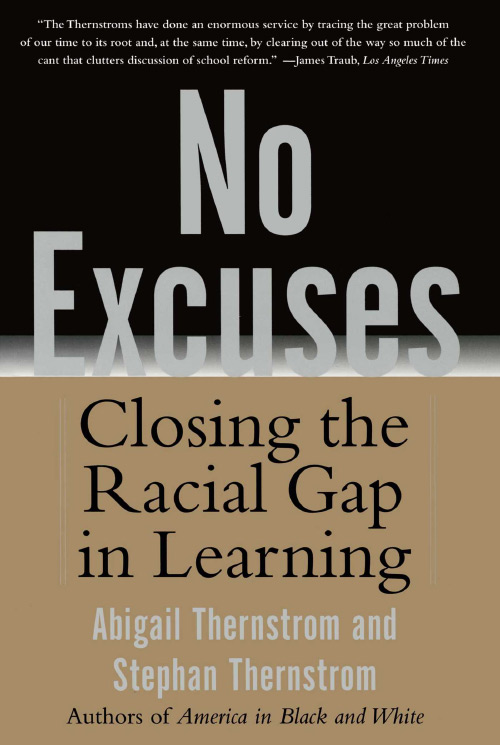 No Excuses: Closing the Racial Gap in Learning, by Abigail and Stephan Thernstrom. Simon & Schuster, 2003.
No Excuses: Closing the Racial Gap in Learning, by Abigail and Stephan Thernstrom. Simon & Schuster, 2003.
Jason L. Riley writes that the Thernstroms argue that “the racial achievement gap in the classroom has less to do with education spending and ‘racist’ tests and more to do with cultural attitudes toward education and the lack of school choice.” Stuart Taylor, Jr., writes, that the book makes a strong case “that the main remedies traditionally prescribed by the major civil-rights and education groups for the academic troubles of black students either have failed or won't work. More racial integration, more money, smaller class sizes, assigning the best teachers to the worst schools—none of these promises much progress, if any, in closing the academic gap.” Named by the Los Angeles Times as one of the best books of 2003.
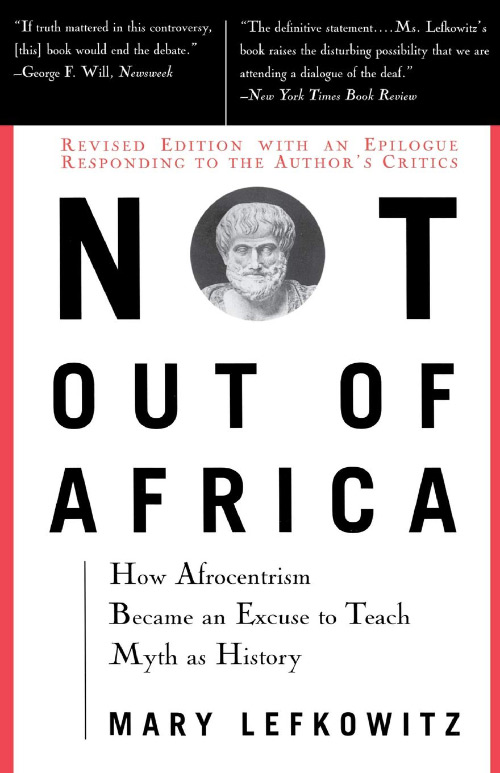 Not Out of Africa: How “Afrocentrism” Became an Excuse to Teach Myth as History, by Mary R. Lefkowitz. Basic Books, 1996.
Not Out of Africa: How “Afrocentrism” Became an Excuse to Teach Myth as History, by Mary R. Lefkowitz. Basic Books, 1996.
Lefkowitz writes, “In the fall of 1991 I was asked to write a review-article for The New Republic about Martin Bernal’s Black Athena and its relation to the Afrocentrist movement. The assignment literally changed my life. Once I began to work on the article I realized that here was a subject that needed all the attention, and more, that I could give to it. Although I had been completely unaware of it, there was in existence a whole literature that denied that the ancient Greeks were the inventors of democracy, philosophy, and science. There were books in circulation that claimed that Socrates and Cleopatra were of African descent, and that Greek philosophy had actually been stolen from Egypt. Not only were these books being read and widely distributed; some of these ideas were being taught in schools and even in universities. . . . [I]t is not true that the Greeks stole their philosophy from Egypt; rather, it is true that the Greeks were influenced in various ways over a long period of time by their contact with the Egyptians. But then, what culture at any time has not been influenced by other cultures, and what exactly do we mean by ‘influence’? If we talk about Greek philosophy as a ‘stolen legacy,’ which the Greeks swiped from Egyptian universities, we are not telling the truth, but relating a story, or a myth, or a tall tale. But if we talk about Egyptian influence on Greece, we are discussing an historical issue.”
 On Slavery and Abolitionism: Essays and Letters, by Sarah Grimké and Angelina Grimké, with an introduction by Mark Perry. Penguin, 2015.
On Slavery and Abolitionism: Essays and Letters, by Sarah Grimké and Angelina Grimké, with an introduction by Mark Perry. Penguin, 2015.
Abolitionist speaker Angelina Grimké (1805–1879) told the Massachusetts state legislature in 1838, “I stand before you as a Southerner, exiled from the land of my birth by the sound of the lash and the piteous cry of the slave. I stand before you as a repentant slaveholder. I stand before you as a moral being, endowed with precious and inalienable rights, which are correlative with solemn duties and high responsibilities, and as a moral being I feel that I owe it to the suffering slave, and to the deluded master, to my country and to the world to do all that I can to overturn a system of complicated crimes.”
“On the Economics of the Colour Bar,” by Morgan O. Reynolds. In W. H. Hutt: An Economist for the Long Run, edited by Morgan O. Reynolds, Regnery, 1986.
Includes a discussion by Reynolds of the difference between the analyses of discrimination by Gary Becker and by W. H. Hutt.
 On the Road to Economic Freedom: An Agenda for Black Progress, edited by Robert L. Woodson, Regnery Gateway, 1987.
On the Road to Economic Freedom: An Agenda for Black Progress, edited by Robert L. Woodson, Regnery Gateway, 1987.
Publishers Weekly says in its review, “Woodson, president of the National Center for Neighborhood Enterprise, opens this essay collection with a historical survey of black self-help, ranging from the pre-Civil War period to the present. His thesis is that dependence on government aid has contributed to making blacks a semi-permanent underclass. Paul Pryde writes on job creation, Bill Alexander on the black church as an economic power, Robert Hill on the potential and actual strength of the black family, Pamela Taylor on education. A summary is offered by Glenn Loury, who concludes that blacks must not ‘sit back and wait for white Americans to come to their rescue.’”
 One by One from the Inside Out: Essays and Reviews on Race and Responsibility in America, by Glenn C. Loury. Free Press, 1995.
One by One from the Inside Out: Essays and Reviews on Race and Responsibility in America, by Glenn C. Loury. Free Press, 1995.
Loury says, “The communal argument among blacks . . . has pitted liberal civil rights advocates (for decades now the established orthodoxy among respectable exponents of black opinion) against advocates of a conservative philosophy for advancement based on direct empowerment of the poor, relying significantly on self-help and dubious about the ability of government programs to resolve the deepest problems affecting black society.”
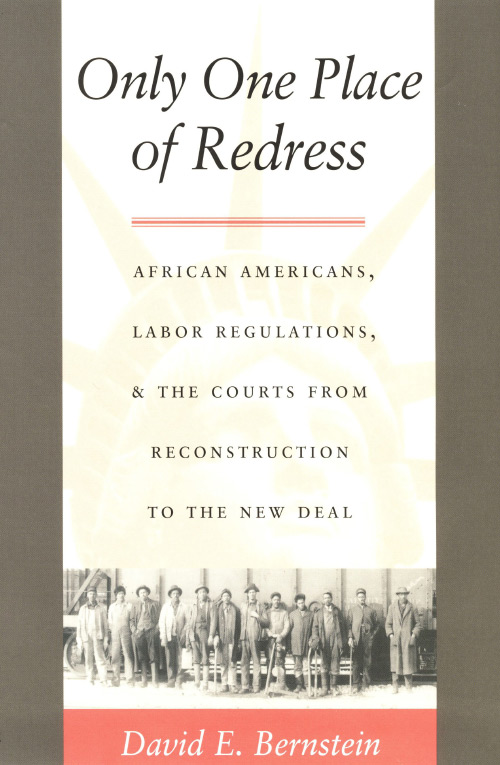 Only One Place of Redress: African-Americans, Labor Relations, and the Courts from Reconstruction to the New Deal, by David E. Bernstein. Duke University Press, 2001.
Only One Place of Redress: African-Americans, Labor Relations, and the Courts from Reconstruction to the New Deal, by David E. Bernstein. Duke University Press, 2001.
This book covers many labor regulations, such as the prevailing wages law (Davis-Bacon Act), that had their roots in efforts to curtail competition from African American labor. Among them are the emigrant agent laws that white supremacist governments in the South passed after the Civil War. These laws sought to curb labor agents who tried to help newly emancipated African Americans match themselves with available jobs and to get them to those jobs. In effect, the emigrant agent laws were a subsidy to white plantation owners’ efforts to keep black farmworkers close at hand and to pay them lower wages than they could have earned in the extended market.
 The Other Side of Racism: A Philosophical Study of Black Race Consciousness, by Anne Wortham. Ohio State University Press, 1981.
The Other Side of Racism: A Philosophical Study of Black Race Consciousness, by Anne Wortham. Ohio State University Press, 1981.
Raymond L. Hall writes, “[Wortham has written a study of] blacks who advocate black consciousness. Wortham condemns ethnic or racial consciousness, and therefore characterizes ‘the other side of racism’ as ‘a dilemma of individual self-esteem as opposed to problems of group conflict in race relations.’ Thus, public policy based on ‘ethnic polity,’ such as that engendered by the civil rights movement is ‘retributive reverse discrimination’ advocated in favor of ethno-racial minorities rather than the oppressive discrimination traditionally engaged in by the majority against such groups. The author believes that ‘achieving power or redressing grievances on the basis of race or ethnicity is clearly not in accord with the American tradition of giving no formal recognition to ethnic groups as political entities.’ Rather, individualism is the key factor and it is the highest form of freedom; hence programs geared to redress groups’ grievances reduce individual freedom.”
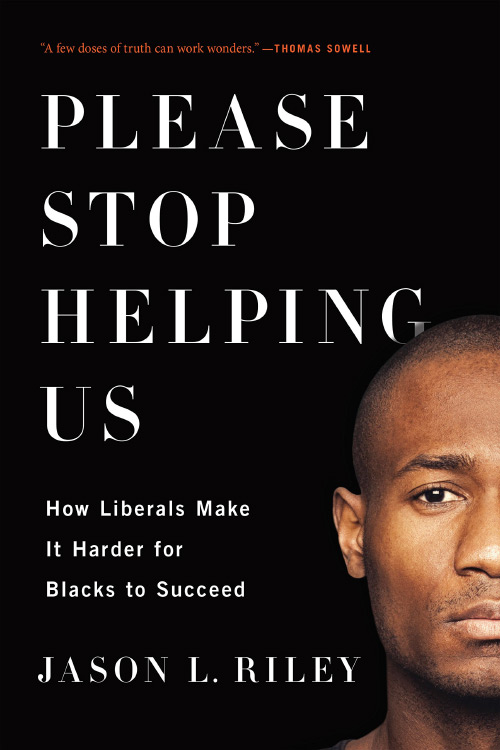 Please Stop Helping Us: How Liberals Make It Harder for Blacks to Succeed, by Jason L. Riley. Encounter Books, 2016.
Please Stop Helping Us: How Liberals Make It Harder for Blacks to Succeed, by Jason L. Riley. Encounter Books, 2016.
Publisher’s publicity material: “Why is it that so many efforts by liberals to lift the black underclass not only fail, but often harm the intended beneficiaries? In Please Stop Helping Us, Jason L. Riley examines how well-intentioned welfare programs are in fact holding black Americans back. Minimum-wage laws may lift earnings for people who are already employed, but they price a disproportionate number of blacks out of the labor force. Affirmative action in higher education is intended to address past discrimination, but the result is fewer black college graduates than would otherwise exist. And so it goes with everything from soft-on-crime laws, which make black neighborhoods more dangerous, to policies that limit school choice out of a mistaken belief that charter schools and voucher programs harm the traditional public schools that most low-income students attend.”
“The Political Economy of Segregation: The Case of Segregated Streetcars,” by Jennifer Roback. Journal of Economic History, vol. 46, no. 4 (December 1986), pp. 893–917.
Many might recall the landmark Supreme Court decision Plessy v. Ferguson, which dealt with segregated seating in railcars. Few, however, recall what Roback demonstrates: “The evidence presented suggests that segregation laws were binding constraints and not simply the codification of customary practice. . . . [T]he streetcar companies were not the initiators of segregation and sometimes actively resisted it.”
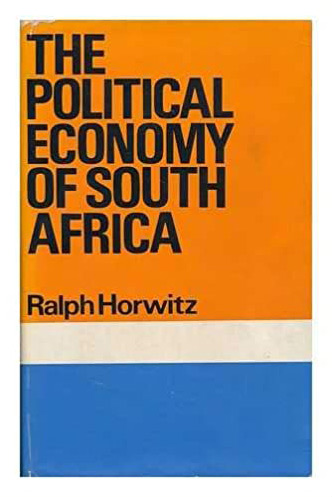 The Political Economy of South Africa, by Ralph Horwitz. New York: Frederick A. Praeger, 1967.
The Political Economy of South Africa, by Ralph Horwitz. New York: Frederick A. Praeger, 1967.
This is a major academic work on how the white-dominated political system under apartheid endeavored to suppress the liberalizing workings of the market in order to hold blacks down and preserve the privileges of whites.
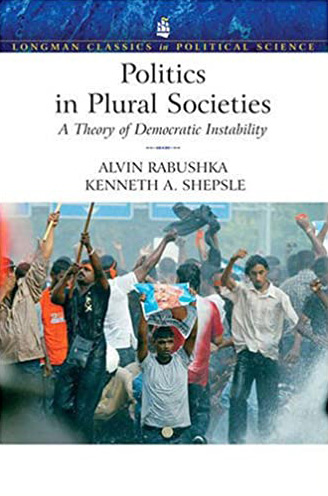 Politics in Plural Societies: A Theory of Democratic Stability, by Alvin Rabushka and Kenneth A. Shepsle. Longman, Second Edition, 2009.
Politics in Plural Societies: A Theory of Democratic Stability, by Alvin Rabushka and Kenneth A. Shepsle. Longman, Second Edition, 2009.
Rabushka and Shepsle write, “The hallmark of the plural society, and the feature that distinguishes it from its pluralistic counterpart, is the practice of politics almost exclusively along ethnic lines. To put the emphasis differently, in the plural society—but not in the pluralistic society—the overwhelming preponderance of political conflicts is perceived in ethnic terms. . . . Public goods in the plural society often become the preserve of the advantaged political community and tend to be viewed as public bads by those communities excluded from power. Since the provision of public goods by the state is its primary raison d’être, regime legitimacy often suffers when public funds are used to provide communal goods. If our theory is sound, an agreement to minimize the scope of public goods—and a reliance on the free market—should tone down the invidious quality of ethnic politics in the plural society. Desirable as this agreement sounds, it is difficult to persuade communities that are at a disadvantage in the competitive marketplace to refrain from using political power.”
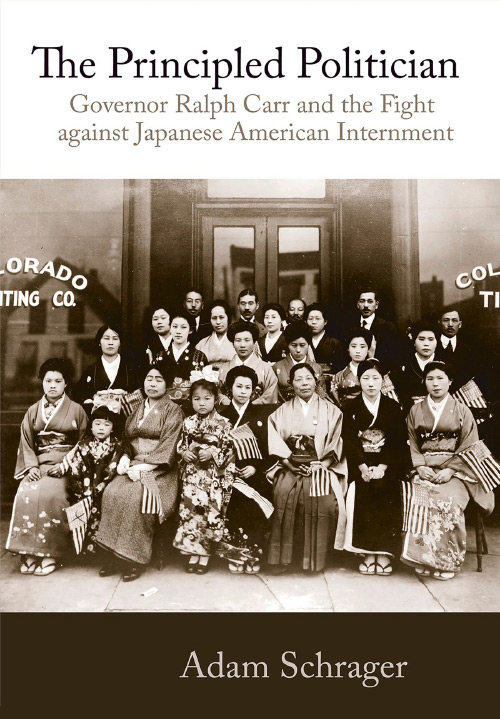 The Principled Politician: The Ralph Carr Story, by Adam Schrager. Fulcrum Publishing, 2008.
The Principled Politician: The Ralph Carr Story, by Adam Schrager. Fulcrum Publishing, 2008.
Ralph Carr was the Republican governor of Colorado at the outbreak of World War II. Carr, unlike the other governors of the Western states, opposed interning American citizens and taking away their constitutional rights based only on who their ancestors were. Carr argued that if you as part of a majority take away the freedom of a minority, against their rights under the Constitution, then when in the future you are part a minority, the same thing may happen to you. He lost his next election, to an FDR disciple who verbally attacked Japanese Americans.
“The Prohibitive Cost of Apartheid,” by Peter Lewin. The Intercollegiate Review, vol. 21, no. 2 (Winter 1985-1986), pp. 25–31.
Y. G.-M. Lulat writes, “The true rationale behind apartheid is the protection of white labor from competition from black labor for the high-paying, high skilled jobs. In this sense, [Lewin says] ‘apartheid is the antithesis of capitalism.’”
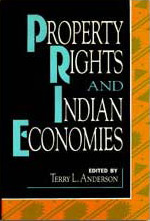 Property Rights and Indian Economies, edited by Terry L. Anderson. Rowman & Littlefield, 1992.
Property Rights and Indian Economies, edited by Terry L. Anderson. Rowman & Littlefield, 1992.
Publisher’s promotional material: “Most research on American Indian economies seeking to explain why Indians have remained near the bottom of the economic ladder has concentrated on resource endowments. This approach has focused policy attention on creating government programs to expand resource exploitation either by encouraging non-Indians to develop reservation resources or by directly enhancing reservation physical and human capital stocks. However, these policies have ignored institutions and the important role of local customs and privileges. This book explicitly considers this institutional context and focuses on the rules that determine who controls physical and human resources and who benefits from their use. Applying the analytical tools from economics, law, anthropology, and political science, the authors consider the three main ingredients necessary for successful economies: stable government, minimal bureaucracies, and the rule of law.”
 Race and Economics, by Thomas Sowell. David McKay Publications, 1975.
Race and Economics, by Thomas Sowell. David McKay Publications, 1975.
Race and Economics investigates the socioeconomic problems so frequently related to the issue of race in popular discourse. Included is an in-depth, compare-and-contrast section on various immigrant groups in the United States. Thomas Sowell writes, “More important than any particular theory of ethnic minority progress is the testing of all theories against fact. Obvious as this may seem, it has been widely disregarded in practice.” Edward Banfield says, “Nobody can talk seriously about ethnicity or race without referring to this book. Sowell is distinguished by the breadth of his interests, the discipline of his analysis, and that rarest of combinations, passion and fair-mindedness.”
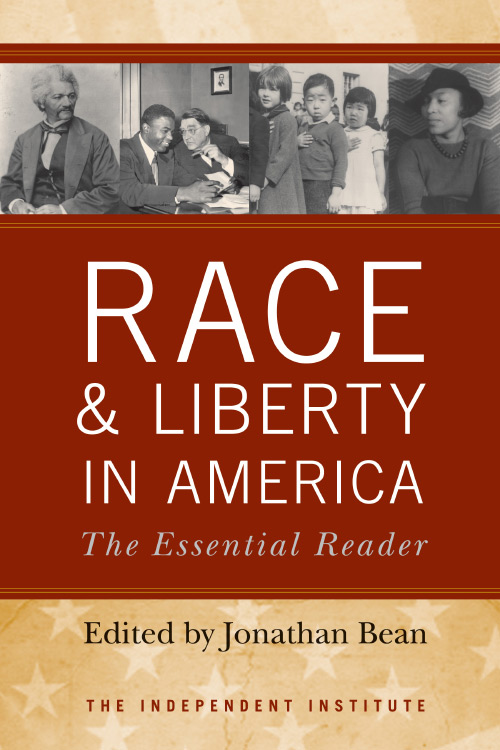 Race & Liberty in America: The Essential Reader, ed. by Jonathan Bean. University Press of Kentucky for the Independent Institute, 2009.
Race & Liberty in America: The Essential Reader, ed. by Jonathan Bean. University Press of Kentucky for the Independent Institute, 2009.
A work that brings together important examples of classical liberalism’s long-standing commitment to racial equality under the law. The book highlights the abolitionist movement, and according to the author, the “allied struggles against Chinese exclusion, abuse of Native Americans, Japanese internment, Jim Crow, and other racial distinction in the law.”
“Race, Competition, and Institutional change in J.R. Commons,” by Abdallah Zouache. European Journal of the History of Economic Thought, vol. 24, no. 2 (April 2016), pp. 1-28. DOI: 10.1080/09672567.2016.1174279
From the abstract: This article examines the contribution of J.R. Commons to race relations, competition, and institutional change. One result of our study is that, in his analysis of institutional dynamics in the United States, Commons’ rejection of laissez-faire is derived from a racist analytical framework: the “superior races” should be protected from the “inferior races.” ... This article then shows that policies often defended as progressive, as education policies, may be derived from racist foundations.”
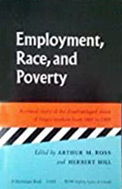 “The Racial Practices of Organized Labor—The Age of Gompers and After,” by Herbert Hill. In Employment, Race, and Poverty, edited by Arthur M. Ross and Herbert Hill, Harcourt, Brace & World, 1967, pp. 365–402.
“The Racial Practices of Organized Labor—The Age of Gompers and After,” by Herbert Hill. In Employment, Race, and Poverty, edited by Arthur M. Ross and Herbert Hill, Harcourt, Brace & World, 1967, pp. 365–402.
Hill was the labor secretary of the NAACP. He discusses the American Federation of Labor’s racially bigoted and anticompetitive practices aimed at blacks, Japanese Americans, Chinese Americans, and Mexican Americans. In early-nineteenth-century Philadelphia, for example, blacks worked in such skilled occupations as cabinet maker, plumber, printer, sail maker, ship’s carpenter, stone cutter, and other crafts. But by the 1890s, because of exclusionary practices by labor unions, blacks had been forced out of skilled jobs and could only work in unskilled ones. Throughout the country, Hill points out, unionization frequently meant “the redesignation of ‘Negro jobs’ as ‘white man’s work,’” thus pushing blacks out of jobs they had traditionally held. Such discriminatory practices by “major” labor unions, Hill says, “have had a cumulative effect in forming the occupational characteristics” of the African American labor force in the country. Gompers coauthored a pamphlet titled Some Reasons for Chinese Exclusion: Meat vs. Rice, American Manhood Against Coolieism—Which Shall Survive? It argued that racially superior whites had to keep out the inferior Asians by law or by violent attacks on them (“by force of arms”). Gompers’s pamphlet said that Chinese Americans (“the Yellow Man”) were naturally inclined “to lie, cheat, and murder” and that Chinese Americans “joyfully” lived in a “slum” surrounded by “vice, filth, and an atmosphere of horror.”
“The Racial Theories of John R. Commons,” by Yngve Ramstad and James L. Starkey, Research in the History of Economic Thought and Methodology, vol. 13 (1995): 1–74.
At the root of Commons’s progressive social philosophy was the belief that the state should protect workers from competition via regulation and should foster labor unions for the same purpose. His economic sociology of race was based on whether various races would fit in with his ideal of a government-managed workforce. He believed that blacks as a race were “indolent, improvident and contented.” (Other supposed flaws, according to Commons, were “impulsiveness,” “strong sexual passion,” “lack of will power,” “instability,” indifference to suffering, recklessness in purchasing watermelons, and much, much more along the same lines.) Black lacked a capacity for what Commons considered higher levels of cooperation, in particular, working in labor unions within a progressive-managed guided economy.
Commons believed that competition per se was “destructive.” He did not believe in a right to compete or undercut. Commons’s position was, in part, anti-black because of his fear that black workers would outcompete overpriced white union labor. Only, Commons thought, if blacks are “brought to the position of refusing to work for lower wages than the white man” will blacks have become reliable and trustworthy, But, Commons reasoned, since black workers inherently had lower productivity (“industrial inferiority”), blacks who insisted on white wages would be fired and replaced by more productive white workers. Ramstad and Starkey describe this as a “Catch-22” for Commons, who therefore could not accept blacks as assimilable into a progressive America.
“Racism and the Early History of the American Economic Association,” by Phillip W. Magness. American Institute for Economic Research, June 13, 2020.
Magness writes, “Consider the case of Richard T. Ely, the principal co-founder of the AEA in 1885 as well as its first secretary. . . . Ely was also an outspoken white supremacist who incorporated eugenic theory into his economic writings. Under his leadership, the AEA published openly racist and eugenic “research” including a notorious 1896 pamphlet on “Race Traits and the American Negro.” . . .
Edward A. Ross, Ely’s student and one of his successors as AEA secretary . . . is perhaps best known today for being fired by Stanford University in 1900. . . . [The university’s] co-founder Jane Stanford . . . objected to a racist speech that Ross gave to a labor rally in San Francisco, in which the economics and sociology professor declared “California, this latest and loveliest seat of the Aryan race, shall not become, if we can help it, the theater of such a stern wolfish struggle for existence as prevails throughout the Orient.” In addition to his early leadership in the AEA, Ross is still a celebrated founding figure of the American Sociological Association and the [American Association of University Professors]. . . .
Ely’s textbook turned its attention to what he dubbed “the negro problem to-day.” According to Ely, the economic poverty of African-Americans arose “from their shiftlessness, their ignorance, their dependence upon credit advances in the farming districts, and their alarming concentration in a few occupations, some of which—particularly as they practice them—are neither educational, uplifting, nor developmental.” . . . For immigrants and racial minorities, . . . Ely recommended a toxic mixture of economic paternalism and eugenic planning. . . .John R. Commons, another Ely protégé who served as president of the AEA in 1917, even adapted this line of reasoning into a bizarre eugenic rationalization of American slavery.
 “Racism, Railroad Unions, and Labor Regulations,” by David E. Bernstein. The Independent Review, vol. 5, no. 2 (Fall 2000), pp. 237–47. Download PDF
“Racism, Railroad Unions, and Labor Regulations,” by David E. Bernstein. The Independent Review, vol. 5, no. 2 (Fall 2000), pp. 237–47. Download PDF
Bernstein writes, “Until recently, labor historians mostly ignored or whitewashed the role of racism in the American labor movement. Influenced by Marxist interest-group theory that attributes nearly all societal conflict to economic class conflict, these scholars assumed that labor conflicts involved oppressed workers with a common interest on one side and powerful employers or capitalists on the other. If labor unions treated African Americans, Latinos, and Chinese poorly, they did so because of the manipulation of capitalists who sought to divide the working class, not because of white workers’ own endogenous racism. Modern labor historians are less enamored of the cruder forms of Marxism and much more willing to recognize that racism suffused and to some extent even motivated organized labor from the post-Civil War period through at least the late 1930s. However, these labor historians ignore the significant role ‘progressive’ labor laws played in giving racist labor unions the power to exclude African Americans and other minorities. For example, several recent articles and theses have discussed how the American railroad brotherhoods attempted to exclude African Americans from the occupations held by their members. These works fail to note that labor laws granting those unions monopoly power were crucial to the ultimate exclusion of African Americans from many railroad occupations.”
“R. C. Hoiles, Civil Rights Pioneer,” by Jonathan Bean. Orange County Register, November 25, 2007.
Historian Jonathan Bean writes, “R. C. Hoiles, . . . co-publisher of the [Orange County] Register . . . stood for freedom at two especially critical times in U.S. and California history—when much of the public wanted to and the federal government did—intern Japanese-Americans in World War II, and later, when a local school board fought to continue the practice of segregating Mexican children from Anglo students.”
The Redefinition of Property Rights in American Indian Reservations: A Comparative Analysis of Native American Economic Development, by Stephen Cornell and Joseph P. Kalt. Harvard Project on American Indian Economic Development, PRS87-3, May 1987. Download PDF
Cornell and Kalt write: “Historically, . . . the [federal] Bureau of Indian Affairs has been the primary holder of property rights (i.e., the primary decision maker) in economic projects for most nations. . . . It is difficult to exaggerate the overall depressed state of Native American economic development or the sorry history of associated public policies.”
“Richard T. Ely: The Confederate Flag of the AEA?,” by Clifford F. Thies and Ryan Daza. Econ Journal Watch, vol. 8, no. 2 (May 2011), pp. 147-156.
From the abstract: “During the Progressive Era, a new breed of social reformers advocated policies such as the segregation of lesser people, including entire races of people, to labor colonies in order to advance social evolution. Prominent among these Progressives was Richard T. Ely, a founder of the American Economic Association, ... honored by that organization in its Economists’ Calendar. To put this honor into proper perspective, this article compiles 55 quotations of Richard T. Ely, spanning his entire professional career, on issues such as eugenics, race, and individual rights versus the rights of the state.”
“Schools Must Resist Destructive Anti-Racist Demands,” by John McWhorter. The Atlantic, January 29, 2021.
Columbia University professor McWhorter writes: “To give in to anti-intellectual, under-considered, disproportionate, or hostile demands [in manifestos] is condescending to the signatories and the protesters. It implies that they can do no better, and that authorities must suspend their sense of logic, civility, and progress as some kind of penance for slavery, Jim Crow, redlining, and the deaths of people such as [George] Floyd. That ‘penance’ would hurt only the community in the end, through lower educational quality....
“The writers of manifestos might classify resistance as racist, denialist backlash. But the civil, firm dismissal of irrational demands is, rather, a kind of civic valor. School officials must attend to the fine line between enlightenment and cowardice—for the benefit of not only themselves, but the Black people they see themselves as protecting.”
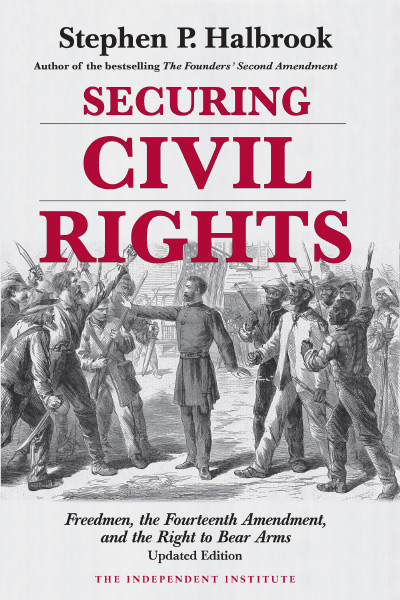 Securing Civil Rights: Freedmen, the Fourteenth Amendment, and the Right to Bear Arms, by Stephen P. Halbrook. Independent Institute, Updated Edition, 2010.
Securing Civil Rights: Freedmen, the Fourteenth Amendment, and the Right to Bear Arms, by Stephen P. Halbrook. Independent Institute, Updated Edition, 2010.
Cited in the landmark firearms-licensing Supreme Court case District of Columbia v. Heller (2008), this book shows how the Fourteenth Amendment was understood as an instrument that protected the right to bear arms in order to help guarantee African Americans’ individual liberty.
“Self-Evident Truths?”, by Staughton Lynd and Eugene Genovese. New York Review of Books, December 19, 1968.
In 1968, Staughton Lynd criticized then-Marxian historian Eugene Genovese for dismissing such concepts as “inalienable rights” and a natural higher law as bourgeois encumbrances. Genovese replies in Marxian terms: “Lynd must necessarily declare slavery and servitude evil and immoral for every time and place; I would argue that at certain times throughout history they contributed to social development and that the moral case against modern slavery must rest on its being a historical anachronism.”
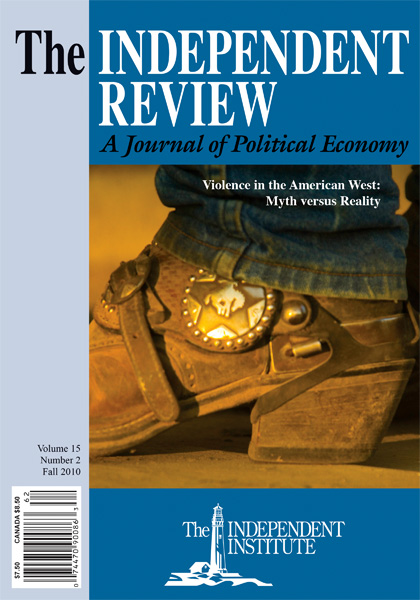 “Selling Laissez-faire Antiracism to the Black Masses: Rose Wilder Lane and the Pittsburgh Courier,” by David F. Beito and Linda Royster Beito. The Independent Review, vol. 15, no. 2 (Fall 2010), pp. 279–94. Download PDF
“Selling Laissez-faire Antiracism to the Black Masses: Rose Wilder Lane and the Pittsburgh Courier,” by David F. Beito and Linda Royster Beito. The Independent Review, vol. 15, no. 2 (Fall 2010), pp. 279–94. Download PDF
The Beitos write, “The past two decades have brought a new appreciation of Lane as a political activist and as a ghostwriter of The Little House on the Prairie books, but her columns for the Pittsburgh Courier have not received their due. Her work for this newspaper represented the most ambitious effort of any author during this period to promote laissez-faire ideas to a black audience. Through her columns, she often proved creative in linking her philosophical beliefs to current issues of major concern to her readers, including segregation, civil disobedience, entrepreneurship, and the struggle for liberty, both overseas and at home.”
 Shame: How America’s Past Sins Have Polarized Our Country, by Shelby Steele. Basic Books, 2015.
Shame: How America’s Past Sins Have Polarized Our Country, by Shelby Steele. Basic Books, 2015.
Steele writes, “The Left has made government intervention the redemption from old America and the road to a new and better America, And this is the Right’s opportunity, because the government is guaranteed failure. Here is the opportunity for the Right to make a point more deeply grounded in human experience: it is only the initiative of human beings—individually and collectively—that can redeem a people from a trying past and deliver them to a better future. Only human initiative is transformative, and it is an eternal arrogance of the Left to assume that government can somehow engineer or inspire or manipulate transformation.”
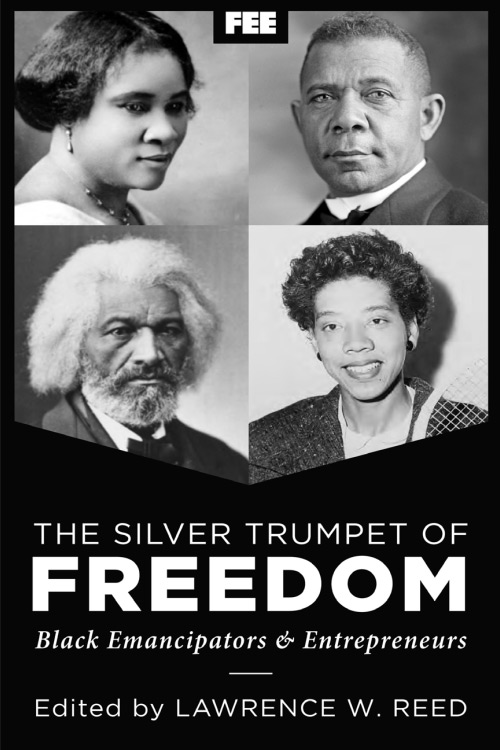 The Silver Trumpet of Freedom: Black Emancipators and Entrepreneurs, edited by Lawrence Reed. Foundation for Economic Education e-book, 2018.
The Silver Trumpet of Freedom: Black Emancipators and Entrepreneurs, edited by Lawrence Reed. Foundation for Economic Education e-book, 2018.
Reed’s foreword reads, “This collection emphasizes eternal principles that should be celebrated in all months of the year, not only February [Black History Month]: principles such as fairness, equality before the law, personal integrity, courage, and speaking truth to power, wealth creation and entrepreneurship, treating your fellow citizens with love and respect. Those principles, and surely a few others as well, are the very foundations of a free society. Some of the chapters in this ebook convey these principles through the inspirational stories of black lives in American history; other chapters explain them by illuminating how free markets, private property, and responsible citizenship encourage solid, positive character.”
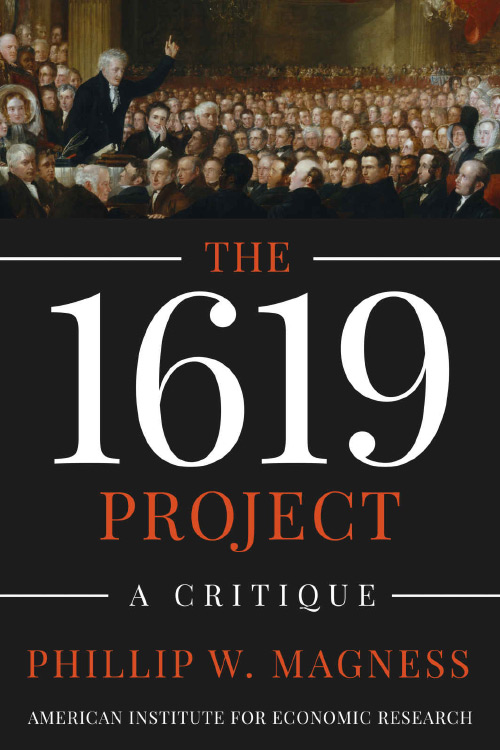 The 1619 Project: A Critique, by Phillip W. Magness. American Institute for Economic Research, 2020. Read Summary
The 1619 Project: A Critique, by Phillip W. Magness. American Institute for Economic Research, 2020. Read Summary
This short, remarkably accessible book is a criticism of aspects of an influential proposed curriculum on the role of African slavery in American history. Economic historian Magness writes, “In its worst instances, the 1619 Project amounts to an unscholarly mess of historical misrepresentations, economic fallacy, and an explicit anti-capitalist ideological agenda. To the project’s further discredit, the [New York] Times’ editors and main contributors have adopted a dismissive stance in response to substantive criticism, including a refusal to correct documented factual errors among its historical claims.”
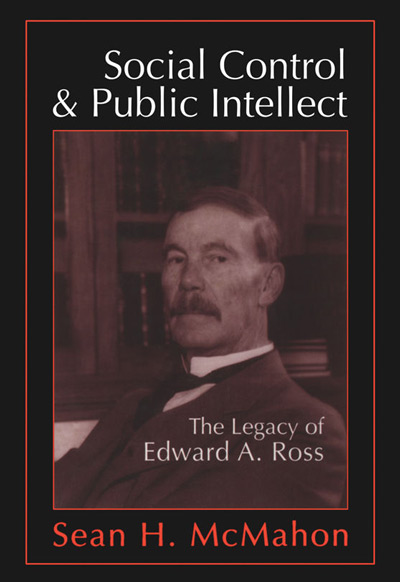 Social Control and Public Intellect: The Legacy of Edward A. Ross, by Sean H. McMahon. Transaction Publishers, 1999.
Social Control and Public Intellect: The Legacy of Edward A. Ross, by Sean H. McMahon. Transaction Publishers, 1999.
Ross was a leading progressive intellectual and one of the founders of the academic discipline of sociology in the United States. He was an advocate of high taxes on and stringent regulation of corporations. He was a critic of the gold standard and an advocate of populist monetary nostrums. Like other progressives, he believed in the rule of experts. Ross was highly influential in the field of sociology and with the general public. For our purposes, chapter 5, Selectionism: A Sociology of Race and Gender, 1900-1920, is the relevant one. McMahon says that Ross “tended to describe only negative characteristics” of the non-Nordic ethnic groups in the United States. “In every face of” of immigrants he scrutinized, “there was something wrong—lips thick, mouth coarse, upper lip too long, cheek bones too high, chin poorly formed.” Ross described blacks as “the idle, quarreling, sensual, ravishing African-American” race. He denounced “coolie labor.” His racial agenda included restrictive immigration, sterilization, and birth control.
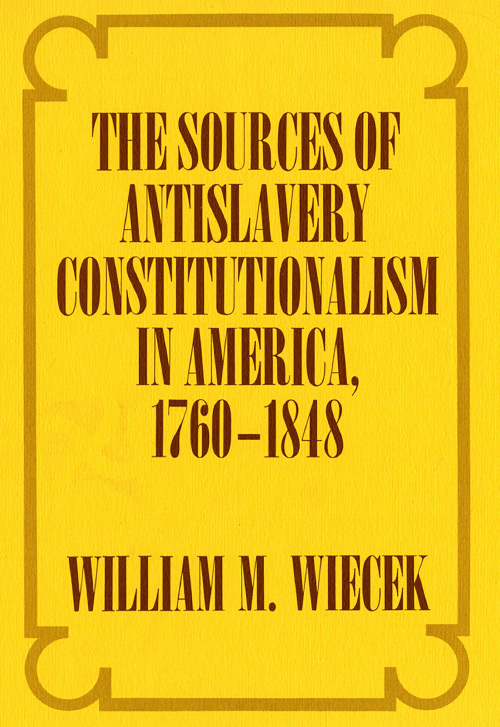 The Sources of Anti-Slavery Constitutionalism in America, 1760-1848, by William M. Wiecek. Cornell University Press, 1977.
The Sources of Anti-Slavery Constitutionalism in America, 1760-1848, by William M. Wiecek. Cornell University Press, 1977.
Wiecek writes, “[T]he radical constitutionalists [were] ‘radical’ because they rejected the consensus [that slavery was legitimate in the states where it existed], [they were] ‘constitutionalists’ because they sought to abolish slavery by constitutional means. ... [T]hough a failure in the short run, radical constitutionalism contained prescient ideas about the American libertarian heritage. Some of those ideas passed into the mainstream of [post-Civil War] constitutional development. ...
“Modern libertarian constitutional thought, using the Fourteenth Amendment’s due process and equal protection clauses as vehicles, has transmuted natural-law concepts into working guarantors of individual freedom. Ideas of substantive due process, equal protection of the laws, paramount national citizenship, and the privileges and immunities of that citizenship were all first suggested by the radicals.”
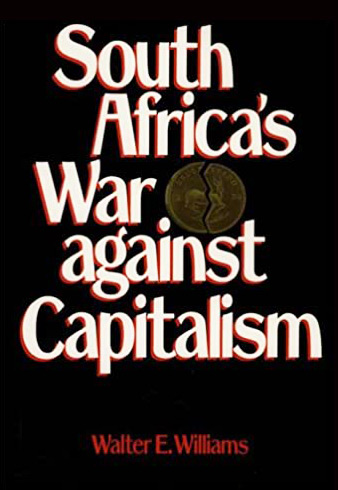 South Africa’s War Against Capitalism, by Walter E. Williams. Praeger, 1989.
South Africa’s War Against Capitalism, by Walter E. Williams. Praeger, 1989.
Matthew B. Kibbe writes, “The white labor unions and other white supremacists lobbied for . . . regulations which, in effect, prohibited blacks from being hired. These groups demanded that the hiring of blacks and other nonwhites be subject to the same compulsory employer compensation and minimum wage requirements granted to white union members. The intent of such legislation, Williams contends, is obvious. Such labor laws took away the only bargaining chip available to the blacks and other non-whites—their willingness to work for a lower wage.”
“Southern Labor Law in the Jim Crow Era: Exploitative or Competitive?”, by Jennifer Roback. University of Chicago Law Review, vol. 51, no. 4 (Fall 1984), 1161–1192.
Labor market cartelization and collusion were insufficient to overcome the incentive to hire black workers, so Jim Crow laws were designed to suppress the wages and socioeconomic mobility of the southern black population. In the words of Roback, “The laws were intended to accomplish what race prejudice could not do by itself. . . . Exploitation was not inherent in the capitalistic system; rather, government power had to be specifically mobilized to achieve this end.”
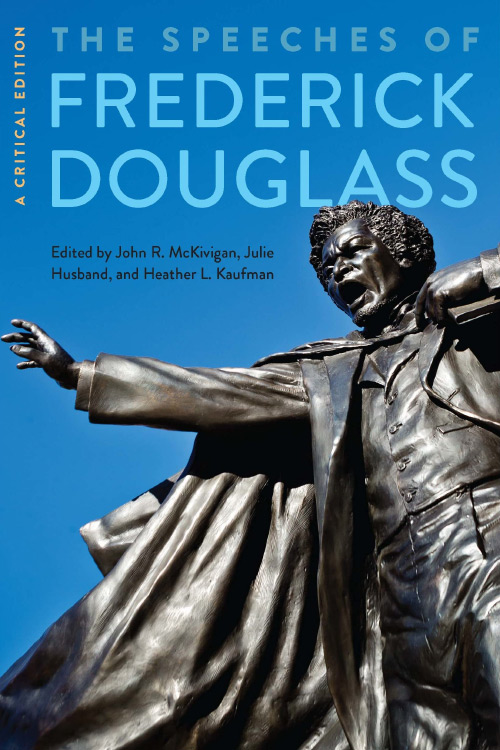 The Speeches of Frederick Douglass: A Critical Edition, edited by John R. McKivigan, Julie Husband, and Heather L. Kaufman. Yale University Press, 2018.
The Speeches of Frederick Douglass: A Critical Edition, edited by John R. McKivigan, Julie Husband, and Heather L. Kaufman. Yale University Press, 2018.
Helpfully footnoted to explain all persons and events. Includes “What to the Slave Is the Fourth of July?” (which has a brief exposition of the antislavery constitutional doctrine of Lysander Spooner and the Liberty Party of the 1840s); “Let the Negro Alone”; and “Self-Made Men.” The latter two somehow weren’t included in The Library of Black America selection of Douglass’s works.
“The Spirit of a Free Man,” by Diana J. Schaub. The Public Interest, Summer 2000.
Schaub writes, “[K]nowledge of the principles and statesmanship of [Frederick] Douglass can serve as a standard by which to judge current policies and contemporary race leadership. Liberals, in particular, need to confront Douglass’s astringent arguments against the cultivation of black race pride and his compelling insistence on the duty of self-emancipation and self-elevation....
“Douglass ... developed a powerful new rhetoric, calling ... for an America true to its own founding principles. Many subsequent black leaders have understood the appeal of a reform-minded patriotism. Witness the language of Martin Luther King, Jr.’s ‘I Have a Dream’ speech: ‘When the architects of our republic wrote the magnificent words of the Constitution and the Declaration of Independence, they were signing a promissory note to which every American was to fall heir.’ Douglass pioneered the combination of praise for the fathers’ principles and vitriol for the sons’ practice.”
“Started in Slavery, Founded in Freedom: 1619 vs. 1776,” by S. Adam Seagrave. RealClearPublicAffairs.com, April 30, 2020.
Seagrave writes, “[T]he focus of critics has been concentrated on the title page of Hannah-Jones’s essay—‘Our founding ideals of liberty and equality were false when they were written’—and Jake Silverstein’s ‘editor’s note’ introducing the project. And then, of course, there is the title: 1619.
What do these parts of the project jointly convey? That American identity—stated in terms of “true birth date” or “origin”—is an either/or and that 1776 must be rejected as a legitimate competitor to 1619 in this determination. The year 1619, in other words, preempts and nullifies 1776. . . . So what’s really at stake in the 1619 vs. 1776 debate is whether the revolutionary principles of 1776 are capable of providing [something to shoot for, a target at which to aim. We have to have somewhere we are going to, not just somewhere we are coming from.] The question is whether the undeniable historical fact of the preexistence of American slavery tainted or invalidated entirely the ideas and arguments about natural human rights that motivated and justified the American Revolution—and that, presumably, have continued to motivate and justify the American experiment in self-government from that time to ours.
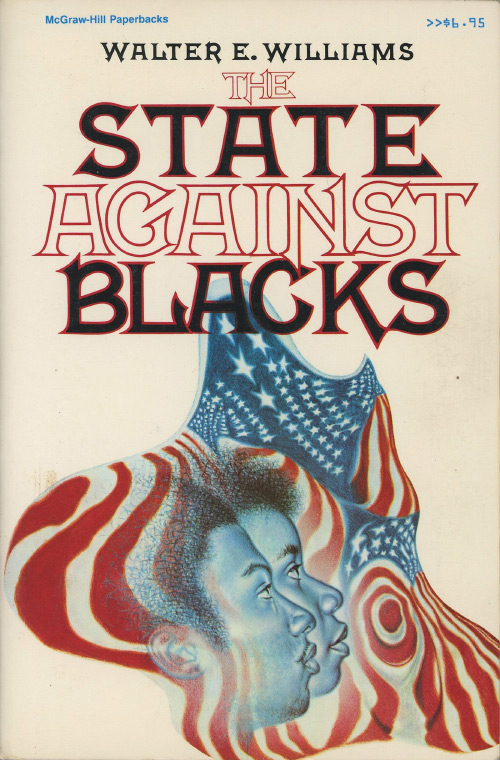 The State Against Blacks, Third Edition, by Walter E. Williams. McGraw-Hill, Third Edition, 1982.
The State Against Blacks, Third Edition, by Walter E. Williams. McGraw-Hill, Third Edition, 1982.
The Manhattan Institute’s review reads, “A critical look at race in America. Williams argues that while bigotry and discrimination may be a partial explanation for the condition of many blacks in America, they are not the only, or the most important, reasons why many blacks are behind. Instead, he shows, a myriad of local, state, and federal laws systematically impede economic and social progress for minorities in America.”
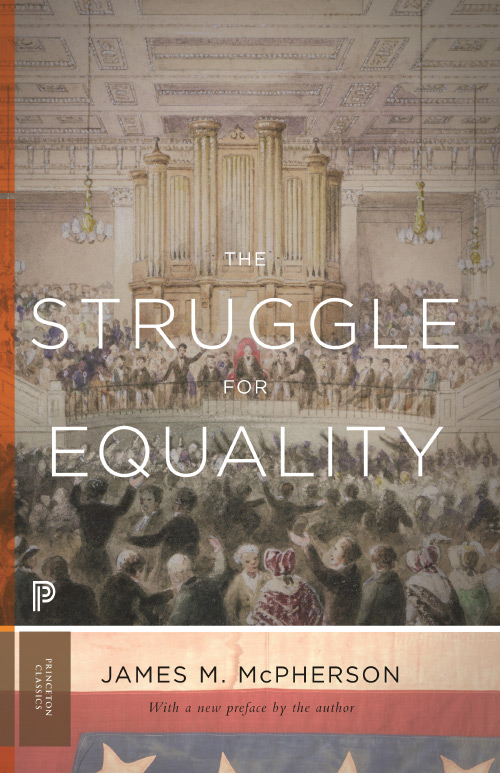 The Struggle for Equality: Abolitionists and the Negro in the Civil War and Reconstruction, by James M. McPherson. Princeton University Press, Second Edition, 2014.
The Struggle for Equality: Abolitionists and the Negro in the Civil War and Reconstruction, by James M. McPherson. Princeton University Press, Second Edition, 2014.
McPherson writes, “[In the early 1960s,] historians seemed to assume that when the Civil War began, and especially when the abolition of slavery became a Northern war aim after 1863, the antislavery movement as an organized effort came to an end. [Historians assumed] that the antislavery crusade was absorbed into the Republican Party [and] abolitionism as a distinct entity disappeared. . . . I was convinced that this disappearance theory was wrong. Abolitionist societies and newspapers continued their activities through the Civil War and beyond. Several new organizations came into existence to promote civil rights and education for freed slaves. Even though [by 1863] the Republican Party and the Lincoln administration caught up with the abolitionists in their commitment to abolish slavery, . . . the reformers continued to forge ahead of the mainstream in their demands for equal rights.”
A Theory of Racial Harmony, by Alvin Rabushka. University of South Carolina Press, 1974.
Rabushka writes, “Under conditions of voluntary exchange in free markets, racial tensions and conflicts are kept to a minimum.”
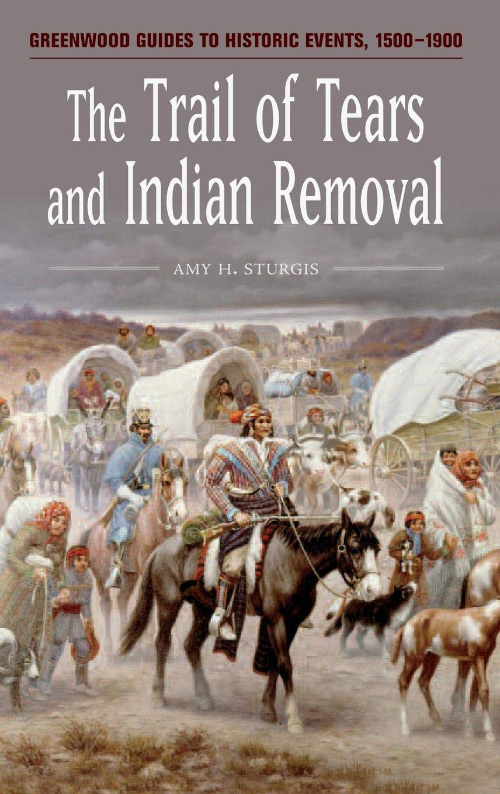 The Trail of Tears and Indian Removal, by Amy H. Sturgis. Greenwood, 2006.
The Trail of Tears and Indian Removal, by Amy H. Sturgis. Greenwood, 2006.
Sturgis writes elsewhere, “[President Andrew Jackson’s] policy of compulsory removal of American Indians—besides enacting a national plan for what was essentially ethnic cleansing, coupled with the forcible redistribution of property from its rightful owners to those who had not earned it—was wildly at odds with the checks and balances inherent in the federal system, directly defying the Supreme Court’s ruling in the 1831 case Cherokee Nation v. State of Georgia. Jackson's taunting response to Chief Justice John Marshall spoke volumes: ‘Marshall has made his decision. Now let him enforce it.’”
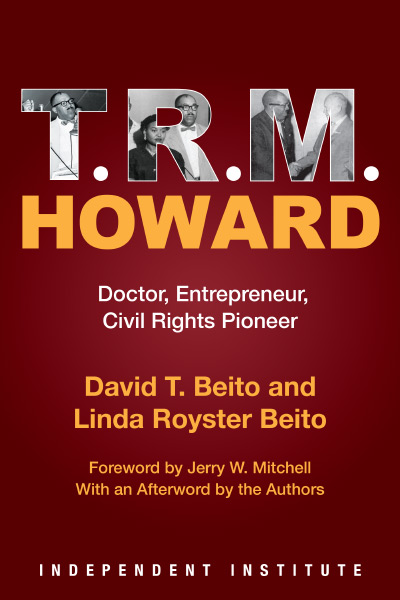 T. R. M. Howard: Doctor, Entrepreneur, Civil Rights Pioneer, by David T. Beito and Linda Royster Beito, foreword by Jerry W. Mitchell. Independent Institute, 2018.
T. R. M. Howard: Doctor, Entrepreneur, Civil Rights Pioneer, by David T. Beito and Linda Royster Beito, foreword by Jerry W. Mitchell. Independent Institute, 2018.
T. R. M Howard was an African American surgeon, businessman, and community organizer. His story is an exemplar of black probusiness civil rights activism in the Jim Crow South.
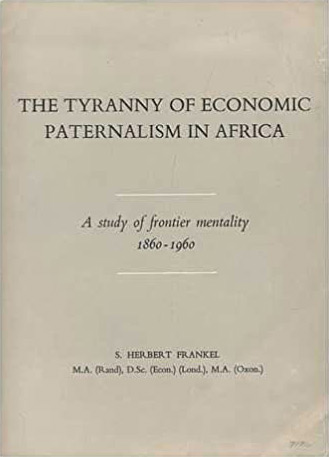 The Tyranny of Economic Paternalism in Africa: A Study of Frontier Mentality, 1860-1960, by S. Herbert Frankel. Supplement to Optima, December 1960.
The Tyranny of Economic Paternalism in Africa: A Study of Frontier Mentality, 1860-1960, by S. Herbert Frankel. Supplement to Optima, December 1960.
Economist Frankel writes, “The Labour Party [in South Africa] wanted an end not only to the Chinese, but to all ‘cheap’ labour that was in competition with White skilled labour, including even, at times, the competition of the Poor Whites. It succeeded in introducing the well-known system whereby, as far as the relationship between African and White labour on the mines was concerned, market forces were largely eliminated and the relative pay and numbers of White skilled workers was rigidly determined according to agreed ratios.”
“Unions and Discrimination,” by Paul Moreno. The Cato Journal, vol. 30, no. 1 (Winter 2010).
Moreno writes, “The claim that organized labor has been a force for racial egalitarianism can only be called a myth. It is one of the many myths that pro-union historians have perpetuated. . . . This article gives an account of the ways in which unions have used racial discrimination as an economic weapon.”
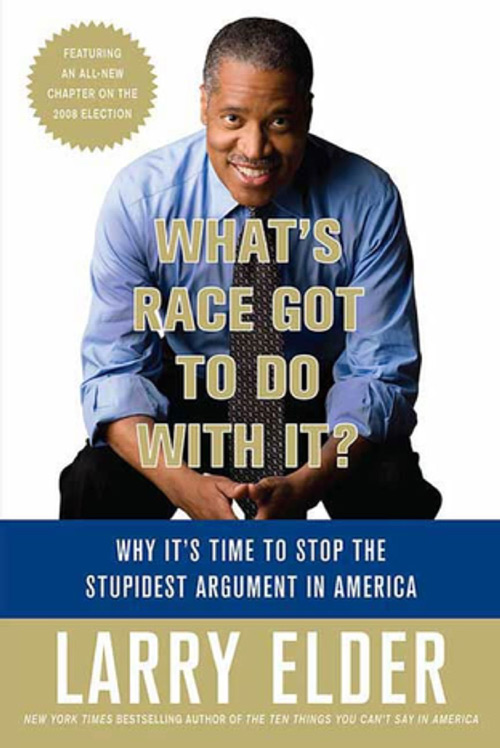 What’s Race Got to Do with It?: Why It’s Time to Stop the Stupidest Argument in America, by Larry Elder. St. Martin’s Griffin, 2009.
What’s Race Got to Do with It?: Why It’s Time to Stop the Stupidest Argument in America, by Larry Elder. St. Martin’s Griffin, 2009.
Elder writes, “[W]here’s the proof that social programs and redistribute-the-wealth schemes work? Who cares? Social programs show that [politicians] ‘do something.’ Whether by offering ineffective ‘jobs programs,’ or providing welfare without work, these programs say that [politicians] are clearly here to help.”
W. H. Hutt and Apartheid, by S. Hugh High. Managerial and Decision Economics, Special Issue: A Collection of Essays Compiled as a Memorial to Professor W. H. Hutt, vol. 9 (Winter 1988), pp. 59–63.
High describes Hutt’s thesis that a system of racial discrimination cannot endure (without state aid) under market pressure. High says the key to understanding Hutt’s thesis on discrimination is found in Hutt’s sense of the power of consumer sovereignty.
“W. H. Hutt and the Economics of the Colour Bar,” by Walter E. Williams. Journal of Labor Research, vol. 18 (1997), 191–203.
Williams writes, “As W. H. Hutt so aptly points out, the major disadvantages of apartheid were borne by South Africa’s nonwhite population, but the disadvantage was shared by whites as well. As such it produced widespread tensions leading to resistance, evasion, contravention, and modification of apartheid law. Often evasion and contravention of apartheid law was led by the very people who shared the ideology of white supremacy. The final abolition of apartheid law may indeed reflect a change in heart by South African whites but the coup de grace was, as Hutt put it, the liberating forces ‘released by what is variously called the ‘free market system,’ the ‘capitalist system,’ or the ‘profit system.’”
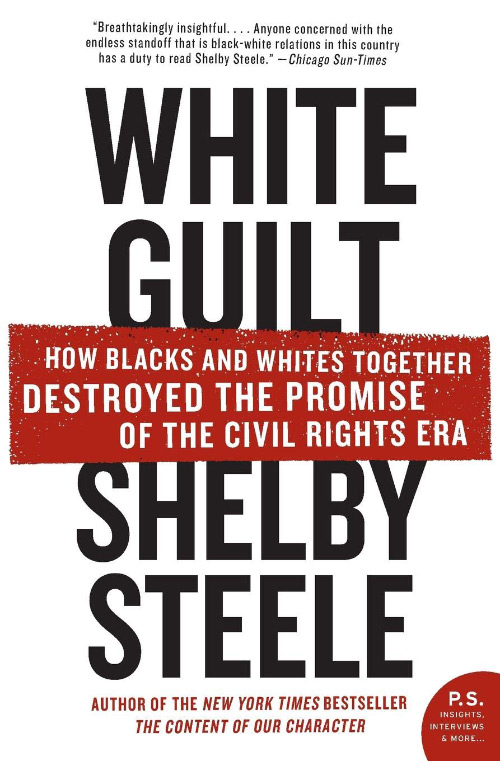 White Guilt: How Blacks and Whites Together Destroyed the Promise of the Civil Rights Era, by Shelby Steele. Harper Collins, 2006.
White Guilt: How Blacks and Whites Together Destroyed the Promise of the Civil Rights Era, by Shelby Steele. Harper Collins, 2006.
Charles Johnson writes, “With his characteristic honesty, clarity, and hard-won wisdom, Shelby Steele exposes the social hypocrisies and racial lies that transformed the once promising post-civil rights era into a period of cultural decadence and mediocrity. We owe Citizen Steele our thanks. On questions of race in America—white guilt, black opportunism—he is our twenty-first-century Socrates: the powerful, lucid, and elegant voice of a refreshingly independent thinker who desires only to see us liberated from sophistry and self-destructive illusions.”
Why Does Racial Inequality Persist: Culture, Causation, and Responsibility, by Glenn C. Loury. Manhattan Institute, May 7, 2019. Download PDF
Loury writes, “Many vocal advocates for racial equality have been loath to consider the possibility that problematic patterns of behavior could be an important factor contributing to our persisting disadvantaged status. Some observers on the right of American politics, meanwhile, take the position that discrimination against blacks is no longer an important determinant of unequal social outcomes. I have long tried to chart a middle course—acknowledging antiblack biases that should be remedied while insisting on addressing and reversing the patterns of behavior that impede black people from seizing newly opened opportunities to prosper. I still see this as the most sensible position.”
“William Hutt and the Economics of Apartheid,” by Peter Lewin. Paper presented at the Southern Economic Association meeting, November 1999. Download PDF
Lewin writes, “[Hutt’s] underlying economic theory is the theory of noncompeting groups. By forcibly preventing other groups from competing with it, a dominant group may be able to achieve a relative monopoly of its services and thereby not only raise its average wage, but also achieve an economic distance from the groups excluded. The group that engaged in this type of behavior in South Africa were the white workers. Starting with labor actions in 1907 and first enacted into law in 1911, white workers attempted, with unfortunate success, to exclude non-whites from the most lucrative jobs, first in the mines and then in the rest of the economy. They used a number of different strategies, varying in subtlety and hypocrisy, from punitive union strikes to the establishment of ‘rate for the job’ legislation, a strategy that excluded non-whites by preventing them from competing much in the same way as minimum wage legislation works today—and supported by the argument that to pay less was unconscionable. In addition, whites were able to pursue a sort of ‘divide and rule’ policy by exploiting the existing antagonisms between the non-white subgroups.”
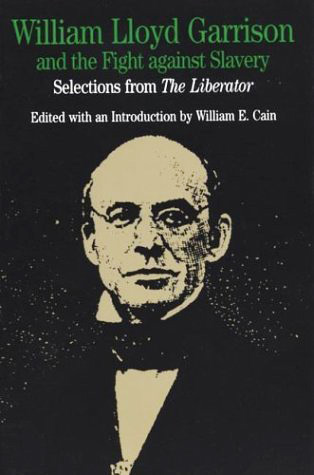 William Lloyd Garrison and the Fight Against Slavery: Selections from The Liberator, edited with an introduction by William E. Cain. Bedford Books, 1995.
William Lloyd Garrison and the Fight Against Slavery: Selections from The Liberator, edited with an introduction by William E. Cain. Bedford Books, 1995.
James M. McPherson writes, “This . . . collection . . . brings together famous, important, and representative writings by the great abolitionist. The splendid introduction places Garrison in the context of his time and evaluates his place in history. Of special value is the intelligent and sensitive discussion of the abolitionists’ espousal of racial egalitarianism in defiance of the racism of the age.”
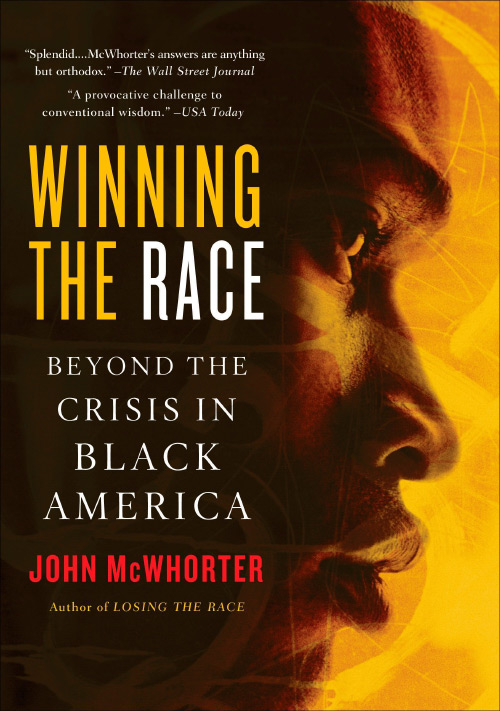 Winning the Race: Beyond the Crisis in Black America, by John McWhorter. Gotham Books, 2005.
Winning the Race: Beyond the Crisis in Black America, by John McWhorter. Gotham Books, 2005.
McWhorter writes, “Our problems . . . have not been the eclipse of the manufacturing economy, overly ambitious middle-class blacks, drugs ‘coming in,’ structural racism, or any of the things commonly adduced. . . . [Instead, therapeutic alienation] has hindered black America from adopting to changing economic conditions. It was rendered black America overly susceptible to the temptations of open-ended dependence and criminality. It has discouraged black American leaders from innovative responses to community problems.
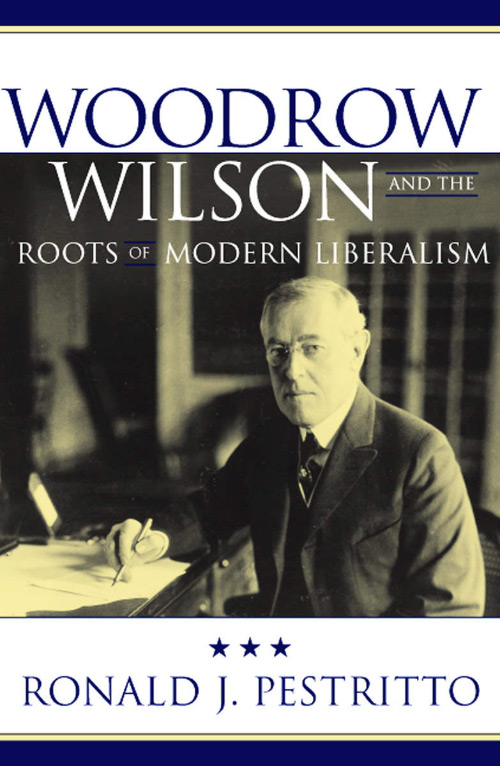 Woodrow Wilson and the Roots of Modern Liberalism, by Ronald Pestritto. Rowman & Littlefield, 2005.
Woodrow Wilson and the Roots of Modern Liberalism, by Ronald Pestritto. Rowman & Littlefield, 2005.
Woodrow Wilson said what he said and did what he did largely because it was called for by his progressive ideology. He grounded his white supremacy beliefs and practices in progressive social and behavioral science claims and a progressive interpretation of the German political thinker Hegel.
Youth and Minority Unemployment: A Study Prepared for the Use of the Joint Economic Committee, Congress of the United States, by Walter E. Williams. U.S. Government Printing Office, 1977. Download PDF
Williams writes, “The major thrust of this study is that market restrictions exacerbate employment problems of youth and minority workers. ... [R]evision in the institutional structure of the labor market must be the primary emphasis of Federal policy to reduce unemployment among the youths and minorities in this country. The focus of these changes should be to promote voluntary and free exchange between workers and employers in a manner consistent with our democratic values. Such a change should include a reduction in the influence held by powerful interest groups over labor legislation and labor policy in the United States.”


